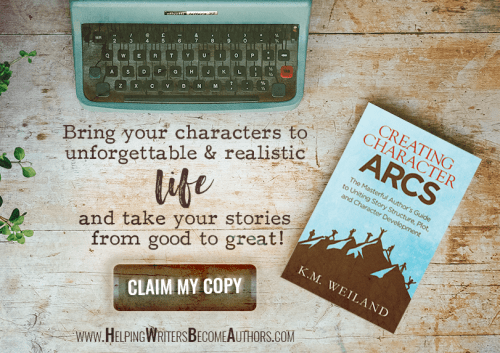K.M. Weiland's Blog, page 2
July 28, 2025
7 Ways to Watch and Read More Intentionally
 In a world flooded with stories—books, shows, films, and endless social content—it’s easy to fall into passive consumption. But as writers and creatives, what we take in matters just as much as what we put out. To write with depth, clarity, and resonance, we must first learn to read more intentionally and watch with greater awareness. Intentional consumption isn’t about being rigid or “highbrow.” Rather, it’s about choosing stories that challenge us, feed us, and reflect the kind of storytelling we want, in turn, to create.
In a world flooded with stories—books, shows, films, and endless social content—it’s easy to fall into passive consumption. But as writers and creatives, what we take in matters just as much as what we put out. To write with depth, clarity, and resonance, we must first learn to read more intentionally and watch with greater awareness. Intentional consumption isn’t about being rigid or “highbrow.” Rather, it’s about choosing stories that challenge us, feed us, and reflect the kind of storytelling we want, in turn, to create.
Earlier this month, I offered a post about “Why Intentional Storytelling Matters in an Era of AI and Algorithm-Driven Content.” It was an exploration of all the reasons intentional storytelling has always mattered and perhaps matters more than ever in our modern era of ultra-speed and convenient shortcuts. The first comment on that post (amongst many in a wonderfully rich discussion) was from Heather J. Bennett who wrote:
It’s also a problem with lazy readers who aren’t taking the time to slow down and read the story as it’s written. … Their attention spans for reading for the nuance of the storytelling is shorter with understandable life priorities and needing to get things done.
This immediately spoke to something I was already thinking about, which is that intentional consumption—reading and watching—is just as important, if not more so, than intentional creation. However, this isn’t to separate writers from consumers or suggest “others” should bear the blame for “bad” stories being all too acceptable to the market. After all, we as writers are first and foremost members of that same audience. To the degree we seek to create intentional art—art that that is “on purpose” and for a reason—then this is a reminder that our reading/watching choices not only inform the general market, but also the quality of what we’re inputting into our own experiences and how that that affects the output in our writing.
In This Article:How Does What You Read and Watch Shape Your Writing?How Reading and Watching Low-Quality Content Affects Your WritingDo Stories With Agendas Harm Good Storytelling?What Does It Mean to Read More Intentionally as a Writer? (7 Tips)How Does What You Read and Watch Shape Your Writing?Which is more important: writing intentionally or reading intentionally?
It’s kind of a chicken-and-egg question, but ultimately I believe intentional media consumption is more important. Why? Because the personalized landscape of our individual media consumption is the fertile ground out of which grows everything we might hope to create. Someone who chooses media with the utmost intention is unlikely to then create without intention. Even if they did, I have to believe the careful attention to input would still favorably impact the output.
In short, we are what we read (and watch).
No doubt, you’re familiar with the suggestion that you are the average of the five people you’re around the most. Your media consumption impacts you just as greatly. It’s worth examining five of the shows you watch most often and five of the series you most like to read (or perhaps for simplicity’s sake, the type of shows and books you most enjoy) and considering how they have “made” you—for better or worse.
You can also think of it like this: your writing is unlikely to rise above the average quality or thematic messaging of what you read and watch. More crucially, consuming low-quality media risks the dulling of yourself. And if nothing else, even if the effect is neutral, you must contend with the fact that in not asking more of your media, and therefore of yourself, you are missing potential opportunities to raise yourself.
How Reading and Watching Low-Quality Content Affects Your WritingIntentional media consumption affects everyone, but as writers, our interaction with media has the potential to create a greater ripple effect. Not only do our media choices affect us personally (which, of course, necessarily affects our writing), they also directly shape our own works of fiction.
The single greatest rule of thumb when it comes to questioning whether you’re reading and watching critically is to consider whether or not you are reading or watching with your soul.
Fundamentally, what I mean by this is that engagement should bring a certain spark of aliveness. What you read or watch should make you feel alive.
Media is nourishment for our minds and souls. Just as with the physical nourishment of food, we have to consider whether we’re getting enough quality nutrients. Are we consuming junk content or “real” content? Just as with junk food, it’s true enough we all tend toward a soft spot for junk entertainment.
What is junk entertainment?
Empty calories that are satisfying-but-not-satisfying.Adds nothing of real value.Possibly leaches valuable nutrients (i.e., time, happiness, contentment, positivity).Strangely but inarguably addictive.This isn’t to say the occasional cheat day isn’t a worthy part of our lives, but a steady diet of anything that isn’t actively adding value is, at best, a waste and, at worst, actively harmful to both ourselves, our potential readers, and inevitably the collective.
Do Stories With Agendas Harm Good Storytelling?We tend to blame much of our current dissatisfaction with modern media on the fact that storytelling has become ever more polarizing and political. It is not uncommon for the release of even the most popcorn-y of all entertainment—the summer blockbuster—to be bulldozed by political rants of all persuasions. It can be difficult to engage with modern media without guarding against intrusive messaging (and that may even be before we know what the messaging may be).
Many people cry out that stories should not be vehicles for political and social agendas and should get back to being “just for fun” or “just entertainment.” (But maybe you already know what I think about the “just” word in front of stories…)
I do not believe this is the problem. Stories have always been political. By their very nature as an inherently transformational experience, they can’t be anything else. (Never mind that the simple act of reporting on the human condition is also inherently—and often dangerously—political.)
Neither is the problem that “real” stories and “important” stories shouldn’t be fun. Indeed, I can’t help but think that the most wildly entertaining genre stories are those with the most potential for impacting humanity—not only through their sheer accessibility but also through their natural tendency toward the simple depth of the archetypal experience.
No, in my opinion, what we are ultimately reacting against—and, out of sheer exhaustion, increasingly putting up with—are specific trends that have taken us away from the true heart—the true soul—of what story really is.
Problematic storytelling devices we should be conscious of when consuming (and should not excuse) include:
Plot-driven stories that neglect character arcs (i.e., characters made to serve plots rather than plots made to serve characters).Entertainment-first storytelling vs. artistic integrity (i.e., seeking stories that will supposedly sell vs. writing stories of originality and personal intensity).Flat stereotypes vs. rich archetypes (i.e., writing tropes and plot formulae vs. meeting, understanding, and mining the deeper archetypal wisdom of story transformation).Storytelling instead of story channelling (i.e., creating stories primarily or entirely from our left brain’s logic vs. listening to what wants to come through the right brain).What Does It Mean to Read More Intentionally as a Writer? (7 Tips)In many ways, I think reading and watching critically is actually more difficult than mindful storytelling. Partly, this is because we often feel we have less control over what media is placed before us to consume versus what we can consciously choose to create. Mostly, however, it is because consumption is a relatively passive action—we simply sit and accept what we are given, even if we don’t necessarily like it—whilst creation necessarily demands our entire active participation and therefore choice.
As such, and because watching and reading as a writer is such an intrinsic part of the larger storytelling process, upping the ante on media literacy for writers becomes a deeply important topic. To that end, here are several suggestions for nourishing your creative mind, all of them straight from my own practices in intentional media consumption.
1. Stop Consuming Content That Doesn’t Spark CuriositySo, yes, the first step is to just: stop watching and reading.
If there’s no spark, turn it off. Don’t consume mindlessly just because it’s there. Just say no.
Although I have always had the habit of watching a hour or two of TV or movies in the evenings, recently I decided to take an indefinite break, for the simple reason that I was spending upward of two hours every day watching stuff that, for the most part, I didn’t even like. Part of this reaction is due to my own moods and tastes at the moment, but part of it is the very real scroll of doom on Netflix and other streaming services.
By stepping away from habitual viewing, not only can I spare myself from increasingly unintentional media choices, I can also devote those two hours to more productive pursuits—like reading a (good) book or working on my own writing. If a movie or show comes along that I’m actually excited about (Stranger Things 5, looking at you!), I’ll watch it.
Until then, impress me. I’ll wait.
2. Make Space for SilenceI have always felt (with no small amount of satisfaction) that watching movies and reading books was just part of my job. But amidst the ever-increasing cacophony that is my (almost) 40-year-old brain in the year of 2025, the need to step back and hear myself has become perhaps an even more important part of that job. As writers, we are (and, I think, should be) influenced by the media collective. But our stories ultimately come from us, and the only way to truly find them is to make sure we can hear our own inner whisperings louder than whatever junk-food TV might be playing in the background.
3. Practice Reflective Watching and ReadingWhen you do read or watch, take the time to think critically about what you consume.
For a writer, this may begin by critically analyzing technique.
As a 21st-century human, this demands noticing where we might be copping to habitual and ingrained responses (either for or against).
Perhaps most important, it should mean noticing how you feel.
Questions to ask about intentional reading and watching:
How are the feelings that are coming up (whether big or small, for or against, happy or angry) a mirror for you?What do you think the author wanted you to experience>How did your actual experience line up with this?These are first and foremost soulwork questions, but inevitably also questions about honing writing technique.
4. Challenge Yourself With Unfamiliar StoriesReading with intention often means going off the beaten track. Instead of simply choosing the latest show available on streaming or the newest bestseller in your favorite genre, take your autonomy in your hands and make the commitment to be bold. Read things that are edgy.
Edgy stories are those that push you because:
They require skillful comprehension,They ask you to step beyond what it is triggering, confronting, or uncomfortable.They beckon from outside your current comfort zone or personal interests.They represent something strange, frightening, or “other.”They scare you (just a little bit).5. Revisit Books and Films That Moved YouReturn to some of your old favorites—those that spoke to your mind, heart, and soul. Sometimes I have to go back to the books and movies that made me want to be a writer in the first place—just to see if the old magic is still there. And it is. And it always gives me hope, because it means story is still there. It’s still alive—on the page, on the screen, and in me. Story is just as vibrant and moving and exciting as it ever was, as long as we’re looking in the right places.
6. Create Intentional Reading ChallengesA good reading (or watching ) challenge is always a good way to mix things up, to make sure your choices are intentional, and to explore story terrain you may otherwise have missed entirely.
Three of my ongoing challenges are:
Reading the classics (which I define as any famous book written prior to 1980).Reading the Pulitzer winners for fiction.Watching all the movies in my collection in reverse order starting in the 1930s.Here are a few ideas for reading or watching challenges:
An author who challenges you.A genre you’ve never read.A book you know sits across from your current ideological fence rail.A movie from each decade.A foreign film.Something you used to love and something you used to hate—just to see if anything has changed.The point is to detour from comfortable ruts and to rouse curiosity for the unknown. You never know what you’ll find—probably your next story idea!
7. Read for True Fun, Not Passive DistractionFinally, it’s worth saying that intentional media consumption is not about forcing yourself to become a highbrow literary elitist (unless you want to be). Rather, I believe the single greatest sign we’re on track with our reading and watching is that we are having fun.
Not mindless semi-satisfaction.
But true heart-pounding, gut-clenching, laughing-out-loud, squealing-in-the-theater, delighted, ignited, enlivened fun.
Yes, story is indeed entertainment, but it is never just entertainment. It is engagement. True fun is never mindless because it shows us the core of our own passions and truths.
So perhaps the best rule of all for reading and watching with intention is to ask: “Am I having fun?” And if you’re not: don’t.
***
If stories are nourishment, then writers are the cooks who must taste every ingredient before serving it up. What we take in becomes the flavor of what we offer the world. Choosing to read more intentionally is more than a personal practice—it’s a creative responsibility. When we consume with care, curiosity, and courage, we elevate our own craft and influence the stories being told around us. The world doesn’t need more noise. It needs storytellers who are listening first.
If writers don’t read/watch with intention, who will?
In Summary:Intentional media consumption isn’t just about watching “better” shows or reading “smarter” books. It’s about aligning your media choices with your creative purpose. When you engage with stories that challenge, inspire, or even unsettle you, you’re nurturing the very soil from which your own stories grow.
Key Takeaways:You are what you consume. Your media habits shape your inner creative landscape.Junk content dulls creative potential. Just like food, low-quality stories leave you hungry for meaning.Reflective consumption enhances storytelling. Asking why something moved you (or didn’t) sharpens your writing instincts.Challenging content helps you grow. Step beyond your comfort zone to discover new perspectives and storytelling techniques.Fun is a compass. True fun—joyful, engaged, soul-stirring fun—is the best indicator of intentional story alignment.Want More?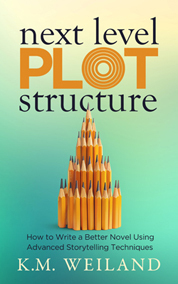
Next Level Plot Structure (Amazon affiliate link)
If you’re feeling inspired to not just consume stories more intentionally but to write them more intentionally too, check out my most recent book Next Level Plot Structure. This one’s for writers who are ready to move beyond just hitting plot points to really exploring the deeper architecture of story—including plot structure’s mirror-like symmetry, the four symbolic “worlds” found within every story, the pacing beneath the beats, and the powerful emotional logic that makes a plot resonate. It builds on what I taught in Structuring Your Novel, but goes further into the soul of structure itself. If you’ve ever sensed there’s something deeper going on in great stories—even if you couldn’t quite put your finger on it—this book will help you tap into that, shape it, and use it with purpose. It’s available in paperback, e-book, and audiobook.
Wordplayers, tell me your opinions! Do you think writers have a responsibility to read more intentionally—and if so, what’s one story that changed the way you think about your own writing? Tell me in the comments!Click the “Play” button to Listen to Audio Version (or subscribe to the Helping Writers Become Authors podcast in Apple Podcast, Amazon Music, or Spotify).
___
Love Helping Writers Become Authors? You can now become a patron. (Huge thanks to those of you who are already part of my Patreon family!)The post 7 Ways to Watch and Read More Intentionally appeared first on Helping Writers Become Authors.
July 21, 2025
What Makes a Story “Bad”? A Guide to Why Your Narrative Isn’t Working
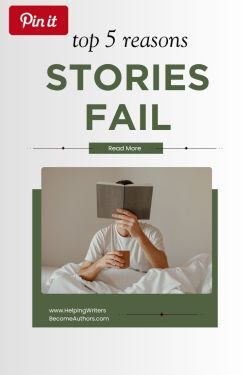 We’ve all experienced it: a story that looks good on paper, features big-name characters, or starts with an intriguing premise—but somehow falls flat. Maybe the characters feel hollow, the plot drifts without purpose, or the ending lands with a thud. But what actually makes a story “bad”? Are there pitfalls you can look out for that can save your story? More importantly, how can you avoid these mistakes when writing or editing?
We’ve all experienced it: a story that looks good on paper, features big-name characters, or starts with an intriguing premise—but somehow falls flat. Maybe the characters feel hollow, the plot drifts without purpose, or the ending lands with a thud. But what actually makes a story “bad”? Are there pitfalls you can look out for that can save your story? More importantly, how can you avoid these mistakes when writing or editing?
Bad storytelling is one of those things where you “know it when you see it.” Or, rather, you feel it. Sometimes when you read or watch something that isn’t working, it can be hard to put a finger on what’s gone wrong. And yet your gut knows. Your visceral reaction to the story may range from a mild sense of dissonance, confusion, or even boredom all the way up to outright irritation or even anger.
The good news is that, as writers, the moments when you start feeling the ick are the best teaching moments possible. They give you the opportunity to look deeper into your own experience and examine why the story prompts this reaction. Although the reasons can span the gamut and are often quite subjective and personal, today I want to look at five of the most common mistakes that can create an objectively bad story. I’ve included examples of stories in which the topic in question was well-executed as well as stories in which mistakes turned what might otherwise have been good stories into bad stories.
In this Article:Characters Who Don’t Accurately Reflect HumanityCharacters Who Don’t Adapt/Learn/ChangePlots That Are Constructed Around Actions Rather Than MotivesPlots That Don’t Ultimately Mean AnythingThemes That Are “On the Nose”What Makes a Bad Story? The Top 5 Reasons Stories Fail1. Characters Who Don’t Accurately Reflect HumanityIt’s not who you are underneath. It’s what you do that defines you.
When it comes to characters, truer words were never spoken than these from Batman Begins. This also goes back to that all-important adage, “Show, don’t tell.” Basically: audiences will always judge your characters based on their actions before they look to any other cues. Even if you’ve created a character who is archetypally coded as a good person, that isn’t enough by itself to prevent audiences from judging and disliking this character if the character is acting out not-so-good behavior.
Worse, if you suggest to audiences that a character is good, only to have that character’s actions fail to accurately reflect how such goodness plays out in real life, the character will likely seem hypocritical or worse. In real life, this is how we interpret such inconsistent behavior from other people. Why should we expect audiences to see our characters any differently?
But make no mistake, this is tricky, since authors too often fail to see their characters with the same objectivity as readers will. Not only do we tend to see characters how we intend to portray them, we also tend toward blindness where our skills aren’t pulling it off.
Bad Example: In the BBC series Land Girls, the character Joyce is presented as brave, plucky, humble, and hard-working. She courageously volunteers as a Land Girl to serve her country during World War II, soldiering on in the face of her fear for her beloved husband, who is a rear gunner in the RAF. The problem (amongst many in this beleaguered series) is that Joyce was written to consistently perform actions that showed her to be selfish and controlling—not least in abandoning her wounded husband for mistakes he made when he had amnesia in France.
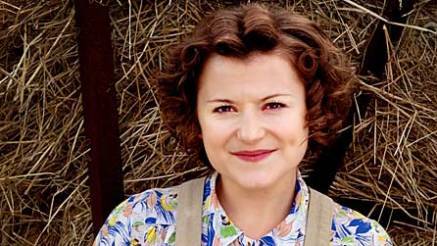
Land Girls (2009-11), BBC One.
Good Example: The secret to remedying this problem is to write dimensional characters. Of course, no character is good all the time. In fact, such characters tend to be boring. But writing a character with layers and complexities is different from inconsistently presenting virtues and vices. Any truly good story does this one well, but a recent example that comes to mind is Wicked, which creates a complex dynamic between frenemies Elphaba and Galinda. Both characters present internal ironies: Elphaba is not as bad as she lets others think, and Galinda is not as good as she lets others think. Instead of glossing over these complexities, the story explores them honestly, not least in authentically representing the consequences of both characters’ decisions. The most obvious example is that Elphaba must eventually take on the role of the renegade everyone has always thought her, not least because it is difficult for others to believe the truth beyond the roles she has always played.

Wicked (2004), Universal Pictures
2. Characters Who Don’t Adapt/Learn/Change
Creating Character Arcs (Amazon affiliate link)
When characters don’t learn from their mistakes, and instead keep doing the same foolish nonsense over and over throughout the story, the intention on the author’s part is usually to milk a certain trope for all it’s worth. Comedy is an obvious example—and when the character in question is a supporting character this can sometimes work. However, although audiences will willingly accept vast shortcomings from a character, they will not long suffer a fool who refuses to learn and grow from the consequences of personal actions.
Stories are change. If everything is the same at the end as it was at the beginning, you don’t have a story. Even in Flat Arc stories, in which the protagonist does not change, the story world does change. Stories are ultimately studies in evolution—whether deeply personal and moral or just practical. If characters fail to grow over the course of the story, this not only lends itself to repetitive action, it also fails to accurately portray an intriguing individual who is worth following around for the entirety of a movie or book.
Bad Example: Let’s go back to some millennial rom-coms here. The Wedding Planner showcases the major problems of the genre in that the characters learn little to nothing from the conflict. In particular, Jennifer Lopez’s female lead shows as little grasp of self-worth at the end of the story as she did at the beginning. She changes her mind about potential love interest Matthew McConaughey, even though he has done nothing to erase the fact that he is a proven cheater—having compromised his relationship with his fiancée (who is not Lopez) repeatedly over the course of the story.

The Wedding Planner (2001), Sony Pictures.
Good Example: Both lead characters in the classic You’ve Got Mail learn from their mistakes and limiting perspectives (their Lies) over the course of the story. Both behave abominably at times, but their coming together in a relationship at the end of the story feels satisfying rather than frustrating because both have also proven their capacity to change. (Indeed, perhaps the most beloved romance of all time, Pride & Prejudice, follows a similar pattern and works precisely because the main characters change so dramatically in the end—particularly with Darcy’s benevolent rescue of Lizzie’s disgraced sister.)

You’ve Got Mail (1998), Warner Bros.
3. Plots That Are Constructed Around Actions Rather Than MotivesMost of the problems in this list come down to the central issue of characters that exist to serve the plot, rather than plots generated by the characters. The simplest way to check your story is to ask whether you’re inventing actions for your characters and then tacking on the motives afterward—or whether you are allowing actions to arise naturally out of deep motivations. We see this often in stories of all genres, but perhaps nowhere more obviously than in action-oriented stories, in which scene dynamics are constructed to take advantage of, exemplify, and hammer home certain character traits.
This is done to create what is intended to be the pleasurable experience of watching characters act out certain dynamics. Ironically, the result often fails for the basic reason that the character’s actions, however interesting in themselves, are not arising from or creating causal or consequential growth.
Bad Example: The recent BBC adaptation of Winston Graham’s historical drama Poldark diverged from its source material in its fifth and final season. The result was a noticeable shift in the quality of writing for the very reason that the writing became more about making the characters do things for the sake of the plot, rather than allowing the plot to rise realistically from the characters’ actions (something the series had done very well up until this point). The final season harps endlessly on the protagonist Ross Poldark’s “recklessness,” plunging him into increasingly foolish and absurd situations—no doubt in the belief that the audience has always enjoyed this personality trait. The difference in this season is that the character’s motivations are retrofitted onto his recklessness, rather than the recklessness arising as a natural personality response to his deeper motives.

Poldark (2015-19), BBC One.
Good Example: Although there are a few moments in the series that push this line, Yellowstone‘s presentation of Beth Dutton generally offers a strong example of a larger-than-life character who creates dynamic and interesting plot events that arise naturally from her own personality and motivation. There is rarely a sense that Beth is being forced to behave in certain ways just to create these plot events or to allow for potentially shocking or intriguing scenes. Rather, the force of Beth’s own passionate character creates the plot events as she goes. She is a particularly obvious example, since her personality is so aggressive and over-the-top, but she shows how writers can get the best plots simply by asking, “What would this character do in this situation?” instead of “How can I get this character to realistically do this thing?”

Yellowstone (2018-2024), Paramount Network.
4. Plots That Don’t Ultimately Mean Anything
Next Level Plot Structure (Amazon affiliate link)
Stories have to mean something. Otherwise, why bother? Life is about meaning. The act of living is about finding that meaning, and stories are meant to reflect that. If they don’t offer meaning—a point—then not only do they almost always fail to entertain, they also miss out on a much greater potential.
How do you inject meaning into a story? It doesn’t have to be anything grand or sweeping or even deep. It just has to offer an ending in cohesion with the story that preceded it.
The meaning of a story is always found in the ending. The ending proves what the story was about. This means that, no matter how great the first 90% of your story, if the ending doesn’t offer a suitable commentary on everything that has come before, the plot won’t ultimately mean anything. Every scene in a story’s plot must drive the story’s conflict toward an endpoint that is cohesive and appropriately tense with all that came before.
Bad Example: I’m going to pick on the final season of Poldark one more time. It’s worth noting that, in the books, this season is not the end of the characters’ stories. However, for the purposes of this adaptation, the fifth season is the end and therefore the only opportunity for audiences to pull a final sense of meaning from the saga. Unfortunately, the comparatively poor writing in this finale not only weakened the overall characterization, particularly of Ross, but also failed to hone in on what had always been the throughline and point of the story: the conflict between Ross and his nemesis George Warleggan, [SPOILER] who is here relegated to the background with a bizarre portrayal of delusional madness in the aftermath of his wife’s death [/SPOILER].
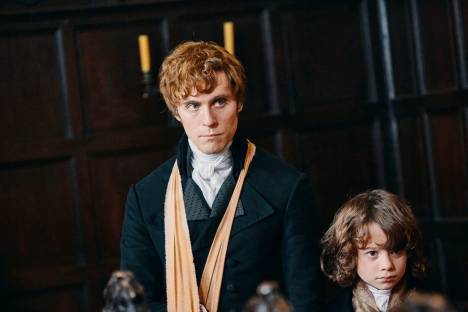
Poldark (2015-19), BBC One.
Good Example: The contrived “ending” of Poldark‘s Season 5 aside, the overall presentation of the story in the previous four seasons were exemplary—not least because the plot naturally returned again and again to core themes: Ross’s tempestuous relationship with his wife Demelza, his obsessive feud with George Warleggan, and his passionate championing of his mine workers’ rights. Every ending of every season leading up to the final one felt satisfying exactly because the tightly focused plots allowed for outcomes that not only felt cohesive but that carried the weight of a deeper resonance.

Poldark (2015-19), BBC One.
5. Themes That Are On the Nose
Writing Your Story’s Theme (Amazon affiliate link)
Good themes arise naturally from plots that are driven by strong characters. Although you can study theme (and in my opinion should—check out my book Writing Your Story’s Theme), you really don’t have to for the simple reason that if your plot and character are working well, so is your theme. In short, if you avoid all of the previous pitfalls, you’re probably already writing a story with innately chewy themes. On the flipside, however, is the problem of writing themes that feel too obvious or on the nose.
These are usually stories in which the theme is either explicitly harped upon (as a sort of “moral of the story”) or stories in which the thematic metaphor is blatant (i.e., the story’s external conflict is too obviously contrived as a mirror of the theme). There’s nothing wrong with an explicit thematic metaphor (such as the communism of Animal Farm or the underworld of grief in What Dreams May Come). But a good rule of thumb is that the more explicit the thematic metaphor, the more emotional complexity the story requires in portraying its moral quandaries.
Bad Example: Thunderbolts* was a much better film than much of what Marvel has been putting out in the last six years. Unfortunately, it suffered from a lack of thematic depth for the very reason that it leaned all of its thematic weight into the explicit metaphor of mental health and depression. [SPOILER]The bad guy is literally depression—a sentient and all-consuming void that has become disassociated from its human originator.[/SPOILER] On the surface, this is an excellent thematic metaphor, especially since it ties into the protagonist Yelena Romanov’s own existential struggles. And yet the film felt decidedly shallow in the face of such a tremendous thematic exploration, simply because its plot and character dynamics did not catalyze the theme. The characters and their involvement with this antagonist were largely incidental, thematically pertinent only tangentially through their personal histories with PTSD and guilt.

Thunderbolts* (2025), Marvel Studios.
Good Example: A much better example of cohesive themes is another Marvel entry, The Winter Soldier. Although structurally much the same as Thunderbolts*, this film is able to deepen itself beyond simple action-genre tropes into an earnest exploration of the complex intersection between moral values and relational loyalty. The reason its themes feel far more organic, and as a result more thought-provoking, is because those themes arise naturally from the protagonist, Steve Rogers, and his interactions with every other character, particularly his long-lost best friend Bucky Barnes, aka the Winter Soldier. One notable difference between these two films is that every character in Winter Soldier plays an important thematic role in interacting with the protagonist and prompting his own journey. In contrast, characters in Thunderbolts*, including the nominal protagonist Yelena, are little more than spectators to the main action, which is driven by the seeming bystander “Bob.” They could easily be changed out for an entirely different team of heroes, whereas Steve Rogers is specifically inherent to the plot and theme in Winter Soldier.

Captain America: The Winter Soldier (2014), Marvel Studios.
***
In the end, bad storytelling is usually the result of misalignment between character and action, plot and meaning, theme and execution. The most common narrative failures happen when writers try to force stories rather than uncover them. The silver lining is this: if you can recognize what doesn’t work in other stories (and your own), you’re already halfway to crafting something better. Great storytelling is simply honest storytelling driven by real characters, deep motivations, and resonant consequences.
Wordplayers, tell me your opinions! What’s a story you wanted to love—but just couldn’t? What made it fall apart for you? Tell me in the comments!In Summary:Stories that fall flat often share the same core problems: characters that lack dimensionality or growth, plots that prioritize spectacle over motivation, and themes that are either nonexistent or overly literal. Understanding these pitfalls can help writers tell stories that are more emotionally honest, structurally coherent, and ultimately more impactful.
Key Takeaways:Characters must reflect human complexity. Viewers judge characters by their actions, not the author’s intentions.Change is the heartbeat of story. If characters (or the world) don’t evolve, the story stalls.Plot must arise from character motivation. Don’t reverse-engineer actions just to create drama.Your ending is your meaning. A satisfying conclusion echoes and elevates everything before it.Themes work best when organic. On-the-nose metaphors often feel shallow without strong emotional grounding.Want More?If you’re ready to dive deeper into what makes characters truly work—and how to build meaningful arcs that drive everything from plot to theme—check out my book Creating Character Arcs. It breaks down exactly how to construct transformative journeys that resonate with readers and anchor your entire story—both plot and theme. You can find it here in my store or anywhere books are sold. It’s available as an e-book, paperback, and audiobook.
Click the “Play” button to Listen to Audio Version (or subscribe to the Helping Writers Become Authors podcast in Apple Podcast, Amazon Music, or Spotify).
___
Love Helping Writers Become Authors? You can now become a patron. (Huge thanks to those of you who are already part of my Patreon family!)The post What Makes a Story “Bad”? A Guide to Why Your Narrative Isn’t Working appeared first on Helping Writers Become Authors.
July 7, 2025
Why Intentional Storytelling Matters in an Era of AI and Algorithm-Driven Content
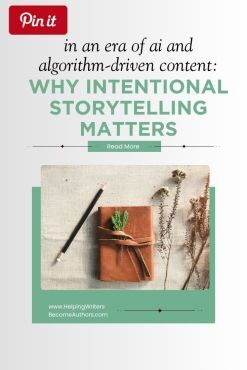 These days, it’s easier than ever to write stories that look like stories. I’m talking about stories follow beat sheets, mimic bestselling formulas, and say all the “right” things. But more and more, I see authors tempted to make creative choices based on convenience rather than imagination or integrity. When that happens, we have to ask: are we saying anything real?
These days, it’s easier than ever to write stories that look like stories. I’m talking about stories follow beat sheets, mimic bestselling formulas, and say all the “right” things. But more and more, I see authors tempted to make creative choices based on convenience rather than imagination or integrity. When that happens, we have to ask: are we saying anything real?
Intentional storytelling—the kind that grows from a writer’s unique vision and voice—is at risk of being quietly drowned out by franchise formulas, AI-generated content, and the pressure to produce faster than ever. If you’ve ever felt like you’re just going through the motions instead of creating something that truly matters, you’re not alone. Let’s explore what’s being lost, and what we can reclaim.
In This Article:What Intentional Storytelling Is Not: Avoiding Formula and Empty ContentHow Modern Media Incentivizes Unintentional ChoicesWhy “Just Following the Formula” Falls ShortTools vs. Crutches: Knowing the DifferenceWhat Is Intentional Storytelling? Defining Purposeful, Authentic Narrative CraftWhat Makes Details Matter: Cohesion and ResonanceHow Subtext Reflects the Integrity of a StoryWhat AI Can’t Do for You (Unless You Know Yourself First)Why Intentional Storytelling Matters More Than Ever in an AI-Driven Content WorldHow the Creative Landscape Is ChangingWhy the Story Still Starts With YouTwo Questions to Guide Every Writing DecisionWhat Intentional Storytelling Is Not: Avoiding Formula and Empty ContentHow Modern Media Incentivizes Unintentional ChoicesThese days, I think most people are at least somewhat dissatisfied with the general scope of popular media, particularly movies and TV. Of course, there are stellar exceptions and of course older generations (of which I am suddenly shocked to find I am one!) tend to look back on previous eras of entertainment with no small gloss of nostalgia. But for the past decade, I have looked out onto the entertainment landscape and been increasingly dissatisfied, on a personal level, with what I’m seeing. Although multiple factors play into this (including nothing more than my own evolving perspectives and tastes), I feel the growing trend and temptation away from intentionality is one of the prime culprits.
This is a trend that affects far more than just storytelling. Despite its many benefits—and perhaps its inevitability—the rise of automation, driven by the ever-accelerating pace of life, presents storytellers with ever-growing temptations to take shortcuts. We’ve now reached the point where the most obvious example is the ability to simply have AI write a whole book for you based on nothing more than a premise. But, really, this is just an extreme example at the end of a long line of such shortcuts.
In the interest of identifying what intentional storytelling is, let’s first examine what it is not.
Why “Just Following the Formula” Falls ShortIntentional Storytelling Is Not:Copy/Paste Beat Sheets – Using structure as a paint-by-numbers formula rather than a flexible framework guided by theme and character. (This is not to say such beat sheets can’t be used for inspiration or troubleshooting, but by themselves, they’re dead forms.)
Formulaic Structures – Plugging characters into a pre-set pattern that forces them to act according to the plot rather than allowing plot to emerge organically from character development.
Soulless On-Demand Content – Prioritizing speed and quantity over resonance, originality, or emotional depth.
Writing to “What Sells” – Chasing trends instead of exploring your unique and authentic voice, interests, and truths.
Fan Service-Driven Plotting – Shaping stories purely to provoke views, applause, or box office returns, at the cost of coherence or meaning.
AI-Generated Brainstorming Replacements – Outsourcing vision, subtext, and originality, especially early in the creative process.
Template-Tweaked Tropes – Recycling familiar stereotypes or plot devices without interrogating their deeper archetypal relevance and resonance.
Focus-Grouped Characters or Themes – Designing stories to appeal broadly instead of deeply.
Although I hope the examples in this list are self-evident, they are also quite general. There will always be instances when some or even all of these things add desirable aspects to a story or offer an author guidance or assistance. However, taken by themselves or without calibration, they all point to the two deepest markers of unintentional writing.
Quite simply, unintentional storytelling is either lazy or fearful.
In the one case, the writer is “filling in the story’s blanks” in some way that fobs off the responsibility of making choices or discovering originality, thus eliminating the need to dig into the depths of one’s own truths. In the other, the writer may be fearful that not following certain trends or using certain tools may endanger relevance and, in some cases, livelihood.
Tools vs. Crutches: Knowing the DifferenceThis is not to say most of these tools can’t be used to simplify the storytelling process or to help the professional author keep up with the demands of the market. For example, structural beat sheets can be a tremendous learning tool. Producing content and writing “what sells” is, at least to some degree, just part of the devil’s bargain of profitable art. Writing tropes is, to some extent, unavoidable.
It’s less important that examples such as these be avoided altogether and much more important that they be used with intention. To the degree any tool or opportunity is used without intention, it risks weakening the whole. This has always been true for writers, even of something so small as unintentional word choices. But as the ability to craft whole stories with much greater speed and ease becomes more accessible and, frankly, more tempting, it is vital for authors to maintain artistic integrity in every choice they make for their stories—from the words to the tools to the characters to the plot.
What Is Intentional Storytelling? Defining Purposeful, Authentic Narrative CraftAt its simplest, intentional storytelling is paying attention to everything. It is about becoming aware of every choice you are making for your story—from plot, theme, and characters to the color of your protagonist’s dress or the name of her dog. It’s about choosing narrators on purpose and for a reason. It’s about vetting settings. It’s about honing word choice to perfection.
Why? Some of those things—like plot and theme—obviously matter, since they are your story. But why does something as inconsequential as a color or a random setting really matter?
What Makes Details Matter: Cohesion and ResonanceThey matter for two reasons: cohesion and resonance.
Cohesion is about ensuring every piece of a story is part of a greater unified whole.Resonance is about the effect of that whole: how every small piece sings together to create an effect bigger than itself—a note of magic that resonates to the audience as a feeling, a sense, something supra-linguistic communicated beyond words or images.How Subtext Reflects the Integrity of a StoryUltimately, what we’re talking about is the creation of subtext. Stories are subtext. The stories that truly work—the stories that stay with you long after you finish them—are stories in which the subtext worked. And the subtext only works when the context is contrived of intentional choices.
It’s important not to confuse “intentional” with “conscious.” Although consciousness always brings intention, intention exists beyond consciousness. Although we often speak of brainstorming stories, stories are always first and foremost an act of dreaming—an act of the subconscious, the imaginal self, the symbolic mind.
What AI Can’t Do for You (Unless You Know Yourself First)When it comes to AI, the subject is certainly complex. As someone who makes a living from creative work, I understand firsthand why AI feels threatening. The landscape of my own livelihood has been impacted significantly these past few years, raising many anxieties about an unknown future. In the spirit of learning about something before forming opinions about it, this year I’ve been experimenting with it in many different ways, particularly looking into how it can help me on the business end of things (i.e., left-brain pursuits such as SEO, research, business brainstorming, and marketing copy) and have often found it helpful. However, my chief concern with its advent is that in relying on it for right-brain activities, it may easily interrupt our dreaming selves and, indeed, do too much of our dreaming for us.
To know the difference requires, first, a keen attention to one’s own imaginal workings and, second, a perhaps even keener attention on the intention of the choices we make for our stories, the origins of those choices, and above all their resonance with ourselves—or what I have always called our “story sense.” This is that deep and true part of ourselves—intuition, sixth sense, gut feeling, subconscious—that knows when something is ours or not—when something is true for us or not.
As you seek intentional storytelling, you can move beyond vigilance and awareness to a deeper intimacy with your own personal truths and symbols. Although left-brained, logic-based brainstorming remains a helpful process for most of us, it cannot replace the right-brained raw creativity of simply imagining. I use a process called dreamzoning to intentionally shut off my logical brain and go deep into my imagination. I’ve rather come to feel that this act of dreamzoning is one of the most subversive approaches an author can take in these times. (Although I offer guided meditations to help with this process, you need nothing more than a little time alone to stare into space.)

Archetypal Character Guided Meditations
Ultimately, storytelling with intention is nothing more than storytelling with honesty, integrity, discipline, and bravery. It begins when we first look deeply into ourselves and write with honesty what is there—no matter how unformed, ill-formed, frighteningly personal, vulnerable, or imperfect—rather than simply mirroring back what we see in others’ stories.
We follow that with the integrity—the wholeness, the cohesion—of making choices that align with those depths, with what feels right for us, with what serves to produce a story that has its own integrity, its own wholeness.
Then comes the discipline of staying with it, even when it’s hard, even when it seems there must be an easier way, a more fun way, a more profitable way, a less scary way. Staying in service to our own integrity is the surest path to any of these things. But even when it seems anything but, we must keep asking the questions that tell if we are indeed staying true to ourselves, our visions, and our stories—not our egos’ stories, but our deepest stories.
And then we face it all with courage—because there is no other way. Storytelling—real, true storytelling (okay, honestly some fake storytelling too) is the most frightening thing in the world. To write with truth requires the incredible vulnerability of feeling deeply into our most primordial selves. To then write well requires the supreme and often painful effort of teaching our brains new pathways, organizing our unruly and chthonic dreams into the straight line of language and communication.
If we fail from time to time in our intentionality with every piece and moment of our stories, it is little wonder. In the end, the only thing that matters is that we keep coming back to the deepest and most honest parts of what we are trying to create and share.
Why Intentional Storytelling Matters More Than Ever in an AI-Driven Content WorldIntentional storytelling has always mattered. But I write this post now because I feel it is more important than ever. Storytelling is the soul of culture, and perhaps as writers some of us have lost our souls a bit lately. The demands of content creation can make it easy to lose touch with the inner muse. Tools like AI can make this slide even more tempting. However, any assistance automated tools render us (in any aspect of life) can rob us of intentionality only insofar as we are out of touch with our own deep knowing and imagining.
How the Creative Landscape Is ChangingMany authors these days are asking themselves the hard questions. As the landscape of the artistic world—to say nothing of the world at large—changes so dizzyingly around us, it becomes ever more important for us to ask these questions. All humans are innately storytellers. But those of us who purport to shape and share our stories through the life-changing portals that are books and movies—perhaps bear a somewhat greater responsibility.
This is not a challenge to step away from the workings of modern life, but rather a challenge to experiment with every moment, to test and try and see and respond—to evolve when evolution is the truest and to stand fast when standing is truest—to allow ourselves the spontenaiety of each moment rather than the dogma of easy answers or quick fixes.
Why the Story Still Starts With YouIntentionality is not, nor ever will be, the easiest path for writers to take. But, truly, storytelling was never meant to be easy. As writers, it is our special sleight of hand that allows us to open portals into the depths of life under the guise of adventure and romance and mystery. There’s no such thing as “just” a story. That’s the trick. That’s the magic. But it only works when we, as storytellers and magicians, are in deep service to the integrity of the story itself.
Two Questions to Guide Every Writing DecisionAll you have to do is keep asking yourself these two questions:
Why? Why did I make this choice? Why did I put this in my story? Is it the easiest answer—or is it deep and true?How can I go deeper? How can I write something that is more honest, more real, more of my dreaming self?However you answer those questions—whether with certainty or with more questions—they are the beginning of a deeper relationship with your craft. Intentional storytelling isn’t a destination; it’s a continual practice of listening inward, trusting your creative instincts, and honoring the story that wants to be told through you. The path may not always be easy, but it is always worth walking one meaningful, intentional choice at a time.
In SummaryIntentional storytelling isn’t about rejecting tools or structure. It’s about using them with awareness, discernment, and, above all, honesty. In a time when it’s never been easier to churn out content that looks like a story, the real work of writing lies in remembering why we create in the first place. Every story worth telling begins not with trends or formulae, but with the deep, sometimes uncomfortable truths we carry inside ourselves.
To write with intention is to choose meaning over ease, depth over noise, and wholeness over quick results. It’s an act of quiet rebellion in a culture of speed and automation. We honor the sacred nature of story by treating it, not as a product to be packaged, but as a portal to something true, resonant, and lasting.
Key Takeaways on Intentional Storytelling:Intentional storytelling means making every creative choice with honesty, integrity, discipline, and courage.Tools like beat sheets and AI must be used with discernment and integrity.The rise of algorithm-driven content makes it more important than ever to return to the source: your own imagination, values, and story sense.Asking “Why?” and “How can I go deeper?” can reconnect you to authentic, resonant storytelling.Want More?If you’re feeling the pull to reconnect with your deeper creative self—to get out of your head and back into your story’s heart—my Archetypal Character Guided Meditations can help. I designed these immersive sessions to support you in finding the “dreamzone”: that quiet, intentional space where imagination flows freely, unshaped by algorithms or outside noise. In these times when technology offers us faster answers, my idea is for these meditations offer a return to deep, slow creativity. You can find them in my shop!
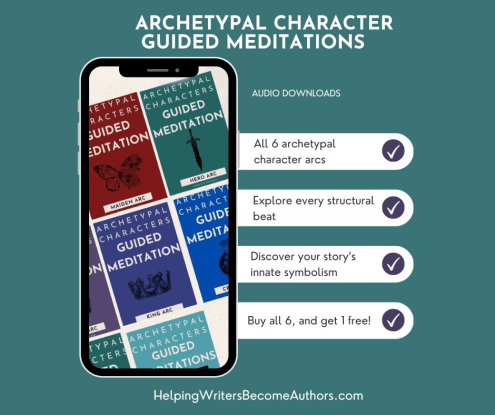
Go on the journey with your characters! Check out the Archetypal Character Guided Meditations.
Wordplayers, tell me your opinions! What does intentional storytelling mean to you—and where in your own writing process do you sometimes feel most tempted to trade depth for ease? Tell me in the comments!Click the “Play” button to Listen to Audio Version (or subscribe to the Helping Writers Become Authors podcast in Apple Podcast, Amazon Music, or Spotify).
___
Love Helping Writers Become Authors? You can now become a patron. (Huge thanks to those of you who are already part of my Patreon family!)The post Why Intentional Storytelling Matters in an Era of AI and Algorithm-Driven Content appeared first on Helping Writers Become Authors.
June 30, 2025
The Secret to Writing Witty Characters (Without Trying So Hard)
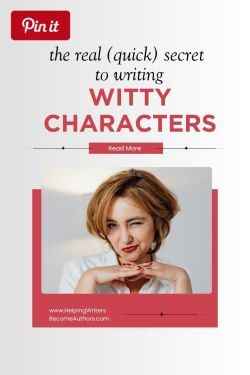 There’s nothing like a sharp-tongued, quick-witted character to light up a scene—especially when the stakes are high or the tone is dark. From sarcastic sidekicks to roguish heroes, witty characters often steal the show. But when the humor feels forced or out of character, it can suck the life right out of a story. So why does some wit dazzle while other attempts fall painfully flat?
There’s nothing like a sharp-tongued, quick-witted character to light up a scene—especially when the stakes are high or the tone is dark. From sarcastic sidekicks to roguish heroes, witty characters often steal the show. But when the humor feels forced or out of character, it can suck the life right out of a story. So why does some wit dazzle while other attempts fall painfully flat?
In the last few years, there have been a rash of movies (mostly summer blockbusters) that try really hard to live up to the witty legacies of films such as Indiana Jones and the original Star Wars, only to fall sadly short.
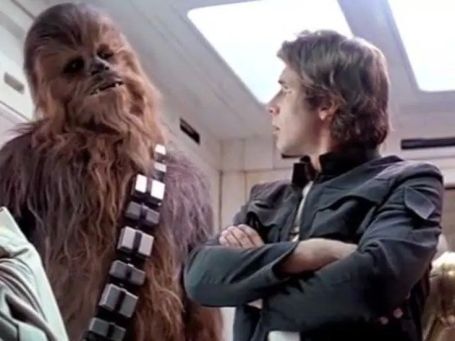
Star Wars: The Empire Strikes Back (1980), 20th Century Fox.
Why is this?
Often, it isn’t the jokes that are to blame. Words that might have been hilarious coming out of the mouth of Han Solo fall flat on their faces coming out of the mouths of other characters.
So what’s the difference?
In a nutshell: character.
The secret to pulling off a witty character is putting the emphasis not on the wit itself, but on the character.
As we’re planning or writing our stories, it’s easy to say, “You know, it would be fun to have a witty character. A wisecracking hero or a bumbling sidekick.” So we stick ‘em in. But our immediate problem with this decision is that we may be trying to force the humor, instead of allowing it to emerge organically from the character.
Humor grows all the more funny in context. And when that context is a fully developed personality, the humor is then able to offer not just a bigger laugh, but a deeper understanding of both the character and the plot.
If your characters are nothing more than smart mouths, readers will instantly perceive they’re cardboard cutouts, stuck in to garner a quick laugh. Some readers will forgive you for this, particularly if you do indeed happen to be able to write hilarious dialogue. But others may resent it as a gimmick and go looking for something that manages to combine both entertainment and depth.
When you craft characters who are fully realized—whose humor springs from their worldviews, flaws, and relationships—that’s when the wit lands with authenticity and impact. Humor can become more than a joke; it can be an insight. So next time you write a snappy one-liner, ask yourself: is it something this character would say, or something you wish someone would say? Instead of just sticking witty words in characters’ mouths, create complete personalities from whom the wit can flow realistically, organically, and engagingly
For more on writing authentic humor, see these posts:
How to Write Funny6 (More) Ways to Improve Your Book by Writing HumorThe Hilarious 2-Step Plan for Writing Humor in FictionHow to Write Funny Dialogue4 Ways to Write Meaningful ComedyWordplayers, tell me your opinions! What’s your best advice for writing witty characters? Who is a favorite example of one done right in fiction? Tell me in the comments!The post The Secret to Writing Witty Characters (Without Trying So Hard) appeared first on Helping Writers Become Authors.
June 23, 2025
Need a Good Book Editor? Top Up-to-Date Recommendations
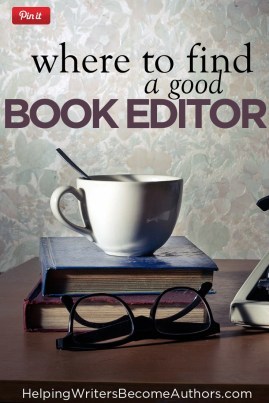 Where do I find a good book editor?
Where do I find a good book editor?
This is without doubt the question I receive most frequently from fellow writers. It’s a hard question to answer because, while finding an editor is easy, finding a good book editor is something else again.
I originally published this resource many years ago after reaching out to trusted writing experts for their recommendations of freelance book editors. I also encouraged readers to share their own suggestions in the comments. Today’s is the latest in a series of updates I’ve made to keep the post current—and I plan to continue revisiting it regularly to ensure the information stays helpful and relevant.
The following editors are in alphabetical order, with their names linked to their websites, so you can do further research to discover which is best suited to your needs. I’ll continue adding to the list whenever an appropriate new name comes to my attention (you can always find the list on the Start Here! page—accessible from the site’s top toolbar).
If you’ve personally worked with a good book editor, please feel free to add his or her name and URL in the comments. (If you’re an editor yourself and would like to be included, please ask one of your satisfied clients to nominate you.) The goal is to make this as useful a resource for everyone as possible. New names will be included in the list when I update it again in the future, so in the meantime be sure to check the comment section for more resources!
The Top Recommended Freelance Book EditorsMarlene AdelsteinServices: Developmental Editing, Publishing Consultations, Screenplay Editing.
Rates: Contact for rates.
Specialties: Commercial Fiction, Thriller, Mystery, Women’s Fiction, Literary Fiction, Historical Fiction, Memoir, and Screenplay.
Affordable EditorsServices: Line editing, proofreading, developmental editing, comic book editing.
Rates: 1¢–1.5¢ per word
Specialities: Science fiction, fantasy, slice of life, historical fiction, memoir, non-fiction.
Services: Developmental edit, editorial assessment, line editing, copyediting.
Rates: Contact for rates.
Specialities: Fiction, memoir, flash fiction, academic articles.
Services: Editing, consulting.
Rates: Contact for rates.
Specialities: Unspecified.
Sally ApokedakServices: Editing, consulting.
Rates: Contact for rates.
Specialities: Unspecified.
Augustine EditorialServices: Developmental editing, copyediting, proofreading, sensitivity reading, beta reading.
Rates: 1.3¢–2¢ per word.
Specialities: Tales set in immersive worlds, stories inspired by S.E. Asian folklore, and slow-burn romantic subplots.
Black Wolf Editorial ServicesServices: Content editing.
Rates: Contact for rates.
Specialities: Unspecified.
Bookaholics Author ServicesServices: Line editing and copyediting.
Rates: Contact for rates.
Specialities: PG-13 material.
Breakout EditingServices: Content editing, copyediting, proofreading.
Rates: 1¢–4¢ per word.
Specialities: Fiction, non-fiction, children’s books, memoir, short stories.
Vicki BrewsterServices: Developmental editing, copyediting, content editing, manuscript evaluation, academic editing, indexing.
Rates: $.50–$1.20 per 100 words.
Specialities: Long-form fiction.
Grace BridgesServices: Line Editing, Developmental Editing, Proofreading.
Rates: $3–$30 per 1,000 words.
Specialties: Science Fiction, Fantasy.
Averill BuchananServices: Development Editing, Copyediting, Proofreading, Indexing.
Rates: £10–£45 per 1,000 words or £1,00–£2,000 per 100,000-word book.
Specialties: Fiction, especially for independent/self-publishing writers.
Burgeon Design and EditorialServices: Coaching.
Rates: $1,200–$6,500.
Specialities: Diversity.
Kelly ByrdServices: Developmental Editing, Line Editing, Copyediting, Proofreading.
Rates: Contact for rates.
Specialties: Crime and Mystery, Thriller, Romance, Literary Fiction, Science Fiction, Fantasy, Memoir.
Sandra ByrdServices: Coaching.
Rates: Contact for rates.
Specialities: Fiction, creative and narrative non-fiction, memoir, devotionals.
Dario CirielloServices: Developmental Editing, Line Editing, Copyediting, Proofreading.
Rates: 1¢–4¢ per word.
Specialties: Science Fiction and Fantasy, Mystery and Crime, Romance, Literary Fiction.
Miranda DarrowServices: Developmental editing, coaching, book mapping, line editing, ghostwriting.
Rates: $.0175–$.0375 per word.
Specialities: Unspecified.
Rochelle DeansServices: Developmental Editing, Copyediting, Proofreading, Manuscript Evaluation, Query Editing, Academic Editing, Non-Fiction Editing.
Rates: Contact for rates.
Specialties: Plot structure.
Christy DistlerServices: Developmental Editing, Line Editing, Copyediting, Proofreading, Manuscript Critique.
Rates: Contact for rates.
Specialties: Unspecified, but seems to lean toward Christian Fiction.
The Engaged EditorServices: Developmental editing, line editing, proofreading.
Rates: Contact for rates.
Specialities: Unspecified.
Joshua EssoeServices: Developmental Editing, Line Editing.
Rates: Contact for rates.
Specialties: Genre Fiction, Fantasy, Science Fiction, Horror.
Elizabeth EvansServices: Developmental Editing, Line Editing, Manuscript Assessment, Proposal Crafting and Editing, Ghostwriting.
Rates: Contact for rates.
Specialties: Unspecified.
Lorna FergussonServices: Developmental Editing, Line Editing, Appraisals.
Rates: £275–£800+, depending on service and length of project.
Specialties: Unspecified.
Free ExpressionsServices: Comprehensive editing.
Rates: $425–$3,875 per 1,000–100,000 words.
Specialities: Fiction, picture books.
Annette M. IrbyServices: Critiquing, copyediting, proofreading, substantive editing.
Rates: $7–$9.50 per page.
Specialities: Christian fiction.
Don JanalServices: Coaching, developmental editing.
Rates: Contact for rates.
Specialities: Non-fiction.
Jessi’s Profressional Book EditingServices: Developmental editing, line editing, copyediting, manuscript evaluation, coaching.
Rates: Contact for rates.
Specialities: Non-fiction, memoir, biography, historical fiction, literary fiction, thriller, mystery, science fiction, fantasy, Christian, young adult, children’s fiction, women’s fiction.
Caroline KaiserServices: Developmental Editing, Copyediting, Line Editing, Proofreading, Manuscript Evaluation.
Rates: Contact for rates.
Specialties: Mystery, Thriller, Historical Fiction, Children’s Fiction, Young Adult, Fantasy, Science Fiction.
Nicole KlungleServices: Developmental Editing, Copyediting, Proofreading, Manuscript Evaluation.
Rates: $2–$3 per standard page.
Specialties: History, Humor, Writing Instruction, Memoir, Literary Fiction, Paranormal Romance.
Mary KoleServices: Developmental Editing, Coaching, Outline Evaluation, Manuscript Evaluation.
Rates: $249–$3,999.
Specialties: Children’s Literature.
Ann KroekerServices: Coaching.
Rates: $125–$1,025.
Specialties: Unspecified.
C.S. LakinServices: Developmental Editing, Proofreading, Coaching.
Rates: $8-$10 per page.
Specialties: Fiction, Non-Fiction.
Dana LeeServices: Proofreading, Copy Editing, In-Depth Editing, Developmental Editing
Rates: 1.4¢–4¢ per word
Specialties: Romance, Mystery, Memoir, Non-Fiction, Spanish to English books
Kurt LipschutzServices: Developmental Editing, Copyediting, Proofreading, Coaching.
Rates: Contact for rates
Specialties: Fiction, Non-Fiction, Poetry
Katie McCoachServices: Developmental Editing, Line Editing, Manuscript Evaluation, Coaching.
Rates: Contact for rates.
Specialties: Science Fiction, Fantasy, Dystopian, Romance.
Leslie McKeeServices: Developmental Editing, Line Editing, Copyediting, Proofreading.
Rates: Contact for rates.
Specialties: Unspecified but seems to favor Romance.
Andrea MerrellServices: Developmental Editing, Copyediting, Mentoring.
Rates: $30–$40 per hour.
Specialties: Unspecified but seems to favor Christian Fiction and Non-Fiction.
Victoria MixonServices: Developmental Editing, Line Editing, Synopsis Editing.
Rates: Contact for rates.
Specialties: Novel, Short Story, Narrative Non-Fiction, Memoir.
Ginger MoranServices: Developmental Editing, Coaching.
Rates: Contact for rates.
Specialties: Fiction, Creative Non-Fiction.
Roz MorrisServices: Developmental Editing.
Rates: £70 per 1,000 words.
Specialties: Fiction, Memoir, Non-Fiction
Robin PatchenServices: Developmental Editing, Line Editing, Proofreading, Manuscript Evaluation, Coaching.
Rates: $2–$7 per page.
Specialties: Unspecified but seems to favor Christian Fiction.
Lisa PoissoServices: Developmental editing, manuscript evaluation.
Rates: Contact for rates.
Specialities: Unspecified.
Arlene PrunklServices: Developmental Editing, Copyediting, Proofreading, Indexing, Fact Checking.
Rates: Contact for rates.
Specialties: Unspecified.
Lori PumaServices: Coaching, manuscript evaluation.
Rates: Contact for rates.
Specialities: Fiction.
Revision DivisionServices: Manuscript evaluation, beta reading, line editing, copyediting, proofreading, coaching, outline evaluation, blurb revision.
Rates: 1.5¢–3¢ per word.
Specialities: Unspecified.
Bryan Thomas SchmidtServices: Developmental Editing, Copyediting, Ghostwriting, Short Story Review.
Rates: 1¢–5¢ per word.
Specialties: Unspecified but seems to favor Science Fiction.
Jessica SnellServices: Proofreading, copyediting, developmental editing, ghostwriting.
Rates: Contact for rates.
Specialities: Unspecified.
Romy SommerServices: Manuscript, appraisal, developmental editing, copy editing, query assistance.
Rates: 1.2¢–1.8¢ per word.
Specialities: Romance, women’s fiction, historical, cosy mysteries.
Jim ThomsenServices: Line editing, copyediting, proofreading, developmental editing, coverage editing.
Rates: Contact for rates.
Specialities: Unspecified.
Crystal WatanabeServices: Developmental Editing, Copyediting, Proofreading, Manuscript Evaluation.
Rates: Contact for rates.
Specialties: Unspecified but seems to favor Science Fiction.
Whisler EditsServices: 1:1 Coaching.
Rates: Contact for rates.
Specialities: Unspecified.
Lara WillardServices: Developmental Editing, Copyediting, Proofreading, Manuscript Evaluation.
Rates: Contact for rates.
Specialties: Graphic Novels, Comics, Children’s Fiction, Picture Books, Young Adult.
Ben WolfServices: Developmental Editing.
Rates: Contact for rates.
Specialties: Unspecified but seems to favor Science Fiction.
Word Haven EditorialServices: Manuscript evaluation, developmental editing, line editing, copy editing.
Rates: Contact for rates.
Specialities: Unspecified.
The Write ProofreaderServices: Proofreading.
Rates: 2¢ per word.
Specialities: Unspecified.
The Writer’s HighServices: Development editing, line editing, manuscript evaluation, manuscript review, coaching.
Rates: 2.4¢–1.2¢ per word.
Specialities: Speculative fiction, historical fiction, mystery, literary, flash fiction, southern themes.
Linda YezakServices: Developmental Editing, Copyediting, Proofreading, Manuscript Evaluation, Coaching.
Rates: $3–$4 per page.
Specialties: Fiction and Non-Fiction.
Ginny YtrrupServices: Developmental Editing, Coaching.
Rates: 2.5¢–3.5¢ per word.
Specialties: Fiction, Non-Fiction, Web Content, Devotional, Query or Cover Letter, Book Proposal, Fiction Synopsis.
***
In today’s market, getting feedback from a skilled editor is crucial—especially if you’re planning to publish independently. If you’ve yet to find a good book editor, start with the names here and get ready to transform your story!
Wordplayers, tell me your opinions! Have you ever worked with a good book editor? Can you add to the recommendations here? Tell me in the comments!The post Need a Good Book Editor? Top Up-to-Date Recommendations appeared first on Helping Writers Become Authors.
June 16, 2025
How to Write Different Character Arcs for the Same Character (Part 2 of 2)
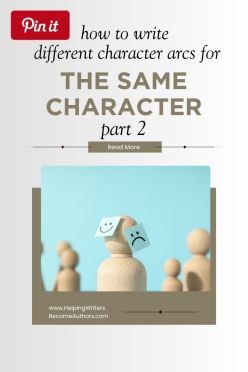 One of the most exciting challenges in storytelling is writing characters who grow over time—not just within a single story, but across several. Whether you’re working on a series or revisiting a familiar protagonist in a new standalone, the question inevitably arises: How do you create different character arcs for the same character without repeating yourself? How do you honor what’s come before while still offering readers something new? In many ways, this is where character development becomes the most rewarding—when you’re not just building a compelling arc, but an evolving journey.
One of the most exciting challenges in storytelling is writing characters who grow over time—not just within a single story, but across several. Whether you’re working on a series or revisiting a familiar protagonist in a new standalone, the question inevitably arises: How do you create different character arcs for the same character without repeating yourself? How do you honor what’s come before while still offering readers something new? In many ways, this is where character development becomes the most rewarding—when you’re not just building a compelling arc, but an evolving journey.
Last month, we did a bit of exploring about how to vary your character arcs by using the Enneagram system to identify different internal conflicts for characters with different personality types. We also talked about how pairing Enneagram insights with the archetypal Life Cycle can generate arcs that are not only distinct but also deeply resonant. However, as I mentioned last week in the first installment in this two-part series, the more I sat with that discussion, the more I realized there was another layer we hadn’t fully uncovered: what happens when you’re writing different character arcs for the same character?
The reader question that originally inspired these discussions (about how to use the Enneagram’s nine types to avoid repetitive Lies the Character Believes) sparked a larger reflection, not just on personality theory, but on long-term character development. If you’re writing a series or revisiting a character across multiple stories, you’ve likely asked yourself: How do I keep this arc feeling fresh? What else can this character learn, face, or become? The challenge isn’t just variety for its own sake. Rather, it’s about honoring the integrity of your characters while continuing to push their evolution in meaningful ways.
Last week, I offered six progressive systems you can use to help you chart long-term serial character arcs. This week, I want to dig into some general principles for approaching a character’s journey as an unfolding process that stretches beyond a single arc.
In This Article:How to Write Different Character Arcs for the Same Character: Write Different ThemesUsing Robert McKee’s Thematic SquareExploring Different Archetypal Roles (Beyond the Life Cycle)Exploring Different Backstory GhostsHow to Deeply Develop a Single Theme: Listen to Your CharactersExploring Different Inner FacetsChanging Up the Supporting CastExploring Consequences From Previous BooksEmphasizing Different EmotionsHow to Write Different Character Arcs for the Same Character: Write Different ThemesLet’s start by exploring the two different approaches you might find yourself in when writing multiple books. The first is the possibility that you are writing totally different character arcs for each new story. This might be because you’re writing an entirely new cast of characters and don’t want to repeat yourself; or it could be because you’re writing an episodic series in which you want to explore new plots and arcs in each installment.
In either case, the simplest rule of thumb when wanting to write different character arcs for the same character is to focus on exploring different external aspects. Basically: write a different plot. A relatively good example of this is the MCU, which featured dozens of stories set in the same story world. The series often succeeded in creating varied character arcs by offering varied or unexpected plots.
>>Click here to read The Do’s and Don’ts of Storytelling According to Marvel
For Example:
Tony Stark’s themes of escapist irresponsibility created very different themes from Peter Parker’s mistakes of teenage naivety.

Spider-Man: Homecoming (2017), Sony Pictures, Marvel Studios.
Here are a few more tools you can use to help you accomplish this variation.
1. Robert McKee’s Thematic Square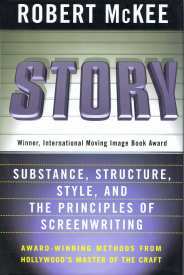
Story by Robert McKee (affiliate link)
Plot is tied to character arc which is tied to theme. The Thematic Square is a storytelling tool created by Robert McKee in his book Story that helps writers explore theme from multiple angles by identifying not only the central value (e.g., love) and its opposite (e.g., hate), but also a contrary value (e.g., indifference) and its negation (e.g., self-hatred). In a single story, this can help you create layered moral complexity and richer character conflict. However, by exploring a different quadrant of the square in different stories, you can visit various thematic neighborhoods within the same world from story to story.
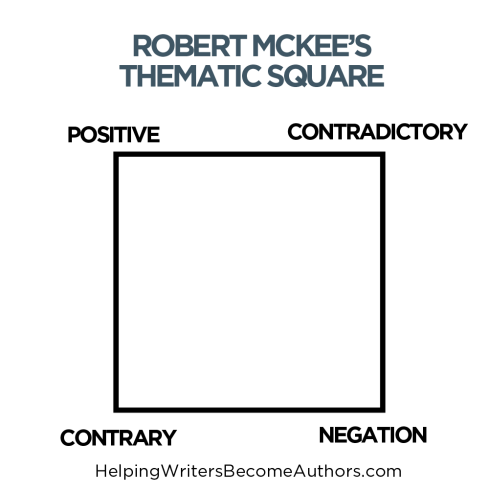

Writing Archetypal Character Arcs (affiliate link)
In addition to the continuity of the archetypal Life Cycle (which I mentioned last week and which you can read more about in my book Writing Archetypal Character Arcs), you can also focus on other ancillary archetypes. For example, exploring how your protagonist manifests the Trickster aspects of persoanlity in one story, the Rebel in another, and the Caregiver in still another can create opportunities for wildly different character arcs. Here’s a quick list of possibilities:
The Trickster – Brings chaos, humor, and unexpected change, often disrupting the status quo.The Ally – Supports others through trials as a loyal companion.The Shapeshifter – Changes form or allegiance, often creating doubt and intrigue.The Innocent – Seeks happiness and safety, often symbolizing purity or naiveté.The Orphan – Craves belonging and connection after experiencing loss or abandonment.The Rebel – Challenges norms and fights against injustice or oppression.The Sage – Pursues truth and knowledge, often as a detached observer.The Creator – Builds, innovates, or brings visions into reality.The Caregiver – Protects and nurtures others, often sacrificing personal needs.3. Explore Different Backstory GhostsFinally, as you seek to generate new and different character arcs throughout your series, remember that the catalyst for any character arc is the character’s backstory Ghost (sometimes called the wound). To explore different character arcs for the same character, look at different catalyzing events in your character’s past. This is a common (although often overdone) approach for TV series. When they finish one story arc and need to pursue a fresh angle, they will often reveal new and unexpected events in the characters’ pasts that link them to new conflicts.
For Example:
After wrapping up its initial storyline and associated character arcs in Season 5, Supernatural extended its run by introducing new backstory elements, notably the main characters’ reaction to secrets in their family’s past, including the fact that their mother had been a Hunter before meeting their father.
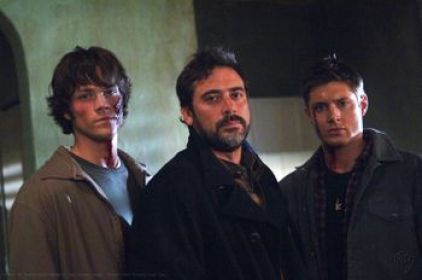
Supernatural (2005-2020), The CW.
How to Deeply Develop a Single Theme: Listen to Your CharactersWhat if you’re writing a series with an overarching plot that goes deep with a thematically cohesive character arc for your protagonist? In that case, how can you keep each story’s exploration of this overarching theme fresh and interesting, while also advancing the bigger arc?
The first thing to remember is that, in any story or series of stories, the thematic Truth a character learns (and therefore the successive Lies the Character Believes that must be overcome) exists along an ever-evolving spectrum. Therefore, even though the character may learn some version of an “ultimate” Truth by the story’s end, that Truth will be built of many smaller realizations and epiphanies along the way.
To progress that thematic throughline in a way that feels both realistic and also deep and nuanced, the most important trick is simply to listen to your characters. Really, this means listen to yourself. Listen to your own deep, innate knowing of how personal change occurs and what questions, roadblocks, sacrifices, and triumphs are likely to feel resonant along the way.
Here are a few tips and tricks for deepening your theme from book to book in a series.
1. Explore Different Inner FacetsIn any dramatic personal change (and therefore in any dramatic character arc) many different facets of the person will be affected. Depending on the length of your series, you have the opportunity to go deep with many different ways your characters are affected by the changes they are undergoing. For example, in one story you might explore how the change impacts the protagonist’s relationships, while in another you might explore how it impacts the protagonist’s experience of hope versus despair, while still another might delve into issues of ongoing personal integrity in the face of the changes the character is confronting.
2. Change Up the Supporting CastOne of the easiest ways to open new opportunities for exploring different facets of your characters is to change up the supporting cast. The thematic elements that arise from your protagonist’s interaction with a parent will be very different from the thematic elements that arise from your protagonist’s interaction with a love interest or frenemy. The only caution here is to make sure that in changing up the cast dynamics, you are not shortchanging the screentime of any key relationships that may, in fact, be the primary reason readers are there in the first place.
3. Explore Consequences From Previous BooksThe juiciest part of any series is its unparalleled ability to go deep with its own consequences. If you’re uncertain how your character’s arc might be different in a subsequent book, start by asking yourself:
What’s changed?What did the characters do or have done to them in the previous book that has consequences?How did the conclusion of the character arc in the previous book change how the character views the world or him/herself?Start pulling threads and exploring what new thematic avenues may now be open to you.
For Example:
The BBC show Poldark was particularly good at this from season to season. Its protagonist, Ross Poldark, rarely made a decision that didn’t have unforeseen but still realistic consequences. One example is his secret purchase of his cousin’s widow’s shares in his then-worthless mine, in order to gift her with needed money. When that mine later became profitable, he was accused by his nemesis of underhanded dealings in “stealing” from her.

Poldark (2015-2019), BBC One.
4. Emphasize Different EmotionsFinally, one of the easiest ways to tap into new and different character arcs for the same character is to explore different emotions. If anger predominated in one book, then perhaps joy or love may be the focus of another. If confidence and self-realization showed up in one book, then despair or disillusionment may follow. Particularly, think about how the “positive” or “negative” charge of one emotional theme can arc into its opposite. For example, in a long series, a defeat may follow a victory may follow a defeat.
Obviously, no one book should focus exclusively on a single emotion. But you can go deep with one emotion as a way of shining its particular shade of color onto the larger stage of your story’s and series’ themes.
***
Exploring different character arcs for the same character invites writers into some of the richest possibilities storytelling has to offer. It asks you to think deeply about the long-term consequences of change, how different parts of a character’s psyche can take center stage at different times, and how transformation itself evolves. Whether you’re crafting a series, revisiting an old character, or simply playing with the idea of continuity across your stories, this kind of narrative layering can open up new creative depths for both you and your readers.
In SummaryWriting different arcs for the same character requires more than just inventing new external conflicts. It demands an understanding of how transformation can unfold in complex, realistic, and meaningful ways across time. By focusing on how plot, character, and theme create and influence one another, you can gain deeper insights into how to naturally and resonantly evolve your character through multiple different character arcs.
Key TakeawaysDifferent arcs for the same character are best built around new thematic focuses and inner conflicts, as well as new plots.Tools like the Thematic Square and archetypal roles (such as Trickster and Caregiver) can offer helpful variety and depth in mapping believable inner change.Long-term character growth feels most authentic when arcs build on each other through a deep understanding of personal transformation and thematic intent.Revisiting a character can offer opportunities to explore consequences from past books, new emotional outlooks, and different relationship dynamics.Want More?
Writing Your Story’s Theme (Amazon affiliate link)
If you’re fascinated by the deeper structure behind character arcs—and especially how they connect to theme—check out my book Writing Your Story’s Theme. In it, I explore how character change is naturally intertwined with plot and theme. These “big three” naturally work together to create cohesive and resonant stories. Whether you’re writing standalone stories or weaving a multi-arc journey across a series, your characters’ emotional evolution is most impactful when it’s inextricably tied to the thematic heart of your story. Writing Your Story’s Theme offers a step-by-step approach to identifying, developing, and integrating theme at every stage of your story’s structure and your characters’ growth. It’s the perfect companion for writers who want their stories to resonate on every level. It’s available in paperback, e-book, and audiobook.
Wordplayers, tell me your opinions! Have you ever written different character arcs for the same character across multiple stories? What challenges or discoveries did you encounter in keeping those arcs fresh and meaningful? Tell me in the comments!Click the “Play” button to Listen to Audio Version (or subscribe to the Helping Writers Become Authors podcast in Apple Podcast, Amazon Music, or Spotify).
___
Love Helping Writers Become Authors? You can now become a patron. (Huge thanks to those of you who are already part of my Patreon family!)The post How to Write Different Character Arcs for the Same Character (Part 2 of 2) appeared first on Helping Writers Become Authors.
June 9, 2025
How to Write Different Character Arcs for the Same Character (Part 1 of 2)
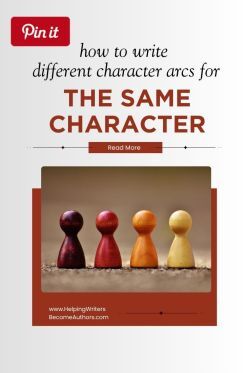 One of the most interesting challenges of writing a series is figuring out how to create different character arcs for the same character, without it feeling repetitive or forced. Whether you’re writing a progressive arc that unfolds over several books or you’re exploring entirely different arcs in each installment, the goal is always to keep the character’s journey fresh and meaningful.
One of the most interesting challenges of writing a series is figuring out how to create different character arcs for the same character, without it feeling repetitive or forced. Whether you’re writing a progressive arc that unfolds over several books or you’re exploring entirely different arcs in each installment, the goal is always to keep the character’s journey fresh and meaningful.
Last month I shared a post about developing different character arcs using the Enneagram personality system. However, after writing that post (and its follow-up about how to unite the Enneagram with the archetypal Life Cycle for even deeper character arcs), I realized I hadn’t quite got to the heart of the question that inspired that original post, from Zoe Dawson:
What is your take on using the Enneagram nine personality types and constructing their Lies so that it’s not repetitious for each story?
Although Zoe’s question was specifically about the Enneagram, the deeper underlying dilemma is one any author writing more than one story will eventually face: How can you make sure you’re writing varied and interesting character arcs—rather than just repeating yourself?
This quandary may ring true in a number of different scenarios:
You’re writing a series in which each book features progressive character arcs that all tie into a larger overarching arc.You’re writing a series that features a thematically new and independent character arc for each story.You’re writing multiple unrelated books and want each one to be fresh and different.
Writing Your Story’s Theme (Amazon affiliate link)
Today, I want to dig deeper into the big picture of how to construct Lies the Character Believes, character arcs, and themes that don’t repeat from story to story. This week, we’ll dig into some specific tools and frameworks that can help you shape varied arcs; next week, we’ll explore some general principles to keep in mind.
To get us started, here’s an idea I’ve always found resonant and that can be helpful to keep inmind when seeking to vary your writing:
We all have one story to tell and we just go on telling it in different ways.
Now, is that explicitly true?
Certainly not.
I, for one, have written one novel after another that is completely different from one another. And yet, I do feel that every story in an author’s body of work must ultimately point to the deeper truths and themes of the foundational story that is the author’s own life. No matter how much you may (or may not) change the outer trappings in your story (genre, setting, plot focus, etc.), the underlying thrust and focus will always be you.

Click to enlarge.
I don’t see this as a drawback. I see it as the most compelling offering every author brings to their readers. In fact, I would suggest you might be most successful in varying your character arcs across books once you can realize the thrust of your own underlying interest and intention. For example, no author was perhaps more famous for writing a legion of staggeringly quirky and unique characters than Charles Dickens, yet even a cursory familiarity with his stories shows the underlying cohesion of the author’s focus on social issues, particularly the plight of the city’s poor. As you brainstorm new and different character arcs for your stories, it might be worthwhile to start by first identifying what actually makes them the same.
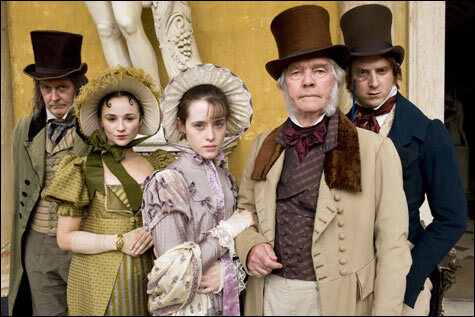
Little Dorrit (2008), BBC / WGBH Boston.
In This Article:6 Progressive Personalities and Development Systems to Write Different Character ArcsThe Five Foundational Character ArcsThe Life Cycle of Archetypal Character ArcsEnneagram Map of HealthSpiral DynamicsThe Four Stages of AlchemyThe Four Stages of Knowing6 Progressive Personality and Development Systems to Write Different Character Arcs for the Same CharacterLet’s start where this question is trickiest: How to write different character arcs for the same character?
One powerful way to write different character arcs for the same character is to ground the character’s growth in a larger developmental framework. Just like real people, characters evolve through recognizable stages—emotionally, psychologically, and even spiritually. Mapping your characters’ journeys to a progressive system can offer a shortcut for creating arcs that feel both fresh and cohesive across a series.
The following models can offer useful blueprints for tracking your characters’ inner evolution and continuing to shift the lens through which they experience the world.
1. The Five Foundational Character Arcs
Creating Character Arcs (Amazon affiliate link)
The basic “shape” of foundational character arcs can, in themselves, guide you to resonant variations. These foundational arcs (which I talk about in-depth in my book Creating Character Arcs and elsewhere) are:
Heroic ArcsPositive Change ArcFlat Arc>>Click here to read more about the Heroic Arcs.
Negative Change ArcsDisillusionmentFallCorruption>>Click here to read more about the Negative Arcs.
You can mix and match these arcs from story to story to create vastly varied experiences. The simplest approach is to observe the natural connections among them, especially between the two Heroic Arcs and the three Negative Change Arcs, respectively.
The Positive Change Arc—in which the character overcomes a limited Lie-based perspective and gains a broader Truth-based perspective—leads naturally into a subsequent Flat Arc—in which the character can stand upon this newly gained Truth to inspire change in others.
Likewise, the Negative Arcs can be crafted as part of a larger cycle. The character might undergo a Disillusionment Arc—in which a difficult new Truth creates a vulnerability that may lead to resistance or resentment. This can then easily lead into a Fall Arc, in which the character bolsters resistance to the Truth by investing in greater and greater Lies. This easily leads into the still worse Corruption Arc, in which a character who once had the opportunity and advantage of recognizing the Truth instead opts to reject it utterly.
2. The Life Cycle of Archetypal Character Arcs
Writing Archetypal Character Arcs (affiliate link)
In my book Writing Archetypal Character Arcs, I fleshed out the mythic lens of storytelling beyond just the Hero’s Journey to explore the full gamut of the human Life Cycle. Each of these six foundational archetypal character arcs naturally leads one into the other, making them perfect for a series in which you wish to explore an ever-maturing character.
These six foundational archetypes are:
The Maiden (Individuation)The Hero (Service)The Queen (Leadership)The King (Sacrifice)The Crone (Surrender)The Mage (Transcendence)You can find even more possibilities for variation—while adhering to a solid thematic throughline—by also exploring the six Flat archetypes and the twelve shadow archetypes that accompany each of the primary archetypes.

Graphic by Joanna Marie Art.
3. Enneagram Map of Health
Personality Types by Don Richard Riso and Russ Hudson (affiliate link)
Last month, I offered quite a few new tools and perspectives for using the Enneagram personality system to develop your character arcs. One particularly useful aspect I did not touch on was the stages of growth inherent to each type. In their book Personality Types, Don Richard Riso and Russ Hudson map nine stages for each type, ranging from healthy to average to unhealthy. Each of these stages could be fleshed out into a full character arc with the stages advanced in either direction, depending on whether you wanted to ultimately tell a story of a character who changes positively or negatively.
For example, the nine stages of Type Eight (the Challenger) are listed like this (from healthy to unhealthy):
The Magnanimous HeartThe Self-Confident PersonThe Constructive LeaderThe Enterprising AdventurerThe Dominating Power BrokerThe Confrontational AdversaryThe Ruthless OutlawThe Omnipotent MegalomaniacThe Violent Destroyer4. Spiral Dynamics
Spiral Dynamics by Don Edward Beck and Christopher C. Cowan (affiliate link)
Created by Don Beck and Chris Cowan, Spiral Dynamics is a model of human development that maps how individuals and societies evolve through increasingly complex value systems. Each stage—represented by a color—reflects a particular worldview, from basic survival to tribal loyalty to achievement and beyond. In character development, Spiral Dynamics can help you explore how a character’s core motivations and beliefs shift over time. As they move up (or regress down) the spiral, they may adopt new values, question old assumptions, or clash with characters operating from different stages, all of which can offer rich material for varied arcs across a series.
The currently recognized stages or “memes” of the spiral are:
Beige (SurvivalSense): Basic survival priorities (e.g., food, water, shelter, safety).Purple (KinSpirits): Tribal loyalty, superstition, tradition.Red (PowerGods): Dominance, ego, power, and asserting control over others (also called the Warlord meme).Blue (TruthForce): Order, rules, morality, and obedience to a higher purpose or authority.Orange (StriveDrive): Achievement, success, science, and rational progress.Green (HumanBond): Equality, empathy, community, and consensus-driven values.Yellow (FlexFlow): Integration, systems thinking, flexibility, and personal responsibility.Turquoise (GlobalView): Holistic awareness, unity, and spiritual consciousness.5. The Four Stages of AlchemyOriginally developed in the Middle Ages as a supposed process of turning lead into gold, the stages of alchemy are now recognized as a symbolic representation of … you guessed it, character arcs! (Aka, psychological development. Potato. Potahto.) A few years ago, I shared a post showing how the four stages of alchemy map perfectly onto the four quarters of story structure and, therefore, character arc. However, you can also choose to represent each stage as an entire arc of its own, allowing a four-story cycle to reveal the final alchemy. For that matter, many explorations of alchemy posit many more stages than just four, which could allow you to both lengthen and deepen your story arc.
The four basic stages of alchemy are:
The Nigredo (The Blackening): Descent into darkness, confusion, breakdown, ego death.The Albedo (The Whitening): Purification and clarity, recognizing truth, separating from illusion.The Citrinitas (The Yellowing): Insight, illumination, integration, growing wisdom.The Rubedo (The Reddening): Wholeness, rebirth, final transformation into the true self.6. Four Stages of KnowingEarlier this year, I similarly explored how the popular “four stages of knowing” also map neatly onto the four quadrants of a story’s development. Just as with the alchemical process, you can also stretch these stages to explore each aspect of the transformation more deeply in multiple evolving character arcs.
The Four Stages of Knowing are:
Not Knowing That You Don’t Know: Unconscious ignorance.Knowing That You Don’t Know: Conscious ignorance.Not Knowing That You Know: Unconscious competence.Knowing That You Know: Conscious competence.***
All of these frameworks—whether psychological, mythic, philosophical, or symbolic—can offer powerful scaffolding for exploring different character arcs for the same character without losing cohesion or authenticity. Not only can they help you avoid repetition, they can also support you in uncovering the deeper throughline of meaning that connects your stories to each other—and to you!
Next week, we’ll zoom out for a big-picture look at some guiding principles and narrative strategies you can use to vary your character arcs across multiple books or series. We’ll explore how to make your arcs feel intentional and fresh without straying too far from the heart of what makes your storytelling uniquely yours. Stay tuned!
In SummaryWhen writing multiple stories—whether within a series or across a body of work—one of the most powerful ways to ensure fresh and meaningful character arcs is to root them in the natural evolution of human development. By drawing on progressive models like the five foundational arcs, archetypal Life Cycle, Enneagram growth stages, Spiral Dynamics, and other systems, you can create nuanced journeys that build upon one another rather than repeat. Recognizing your own thematic throughline as an author only deepens the authenticity of these arcs. Next week, we’ll look at broader storytelling principles that can help you vary arcs across books, even outside of progressive systems.
Key TakeawaysRepetition in character arcs is a common challenge for writers of series or multiple books, but it can be overcome with intention and structure.
Developmental models like the five foundational character arcs or the archetypal Life Cycle can offer a roadmap for evolving your character’s journey meaningfully across books.
The Enneagram and Spiral Dynamics can offer deep personality and value-system frameworks that naturally lend themselves to transformation over time.
Alchemy and symbolic systems can add depth and metaphorical resonance to character progression.
Discovering your own thematic signature as an author can be a compass for creating unique yet unified arcs across your body of work.
Want More?
Writing Archetypal Character Arcs (affiliate link)
If you’re looking to deepen your understanding of character development and ensure your cast evolves in meaningful, thematically resonant ways, my book Writing Archetypal Character Arcs offers a powerful framework. It explores six foundational arcs—Maiden, Hero, Queen, King, Crone, and Mage—that reflect universal patterns of growth and transformation. Whether you’re crafting a protagonist’s journey or exploring contrasting arcs for supporting characters, this resource can help you weave rich, symbolic layers into your storytelling. It’s perfect for anyone wanting to write dynamic character arcs for different characters across a standalone novel or an entire series. It’s available in paperback, e-book, and audiobook.
Wordplayers, tell me your opinions! How do you approach writing different character arcs for the same character in a series or across multiple books? Tell me in the comments!Click the “Play” button to Listen to Audio Version (or subscribe to the Helping Writers Become Authors podcast in Apple Podcast, Amazon Music, or Spotify).
___
Love Helping Writers Become Authors? You can now become a patron. (Huge thanks to those of you who are already part of my Patreon family!)The post How to Write Different Character Arcs for the Same Character (Part 1 of 2) appeared first on Helping Writers Become Authors.
June 2, 2025
The Danger of Overexplaining in Dialogue—and How to Avoid It
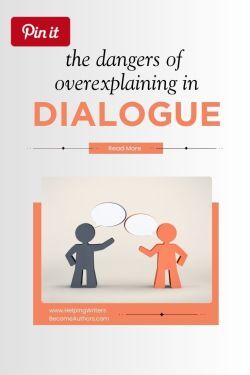 Note From KMW: This week’s post is a quick one—but it covers a sneaky little habit that can creep into even the best of stories: overexplaining in dialogue. I’ve seen it in books I’ve read, and I’ve definitely caught myself doing it too. It’s easy to do when we want to make sure readers really understand what’s going on, but often, this dialogue mistake just ends up slowing the story and undercutting our characters.
Note From KMW: This week’s post is a quick one—but it covers a sneaky little habit that can creep into even the best of stories: overexplaining in dialogue. I’ve seen it in books I’ve read, and I’ve definitely caught myself doing it too. It’s easy to do when we want to make sure readers really understand what’s going on, but often, this dialogue mistake just ends up slowing the story and undercutting our characters.
If you’ve ever wondered whether you’re trusting your readers enough, this one’s for you! The post was inspired by an example so bad I’m paraphrasing rather than directly quoting it. :p I’ll be back next week with a longer post (and podcast), the first in a two-part series I’m really excited about. Stay tuned!
***
As writers, we work hard to earn our readers’ trust. Nothing shatters that trust faster than treating them like they’re not smart enough to keep up. One of the most subtle and common ways authors do this is by overexplaining in dialogue. This usually doesn’t happen intentionally, but out of the fear readers won’t “get it” unless you spell it out. Unfortunately, when you overexplain or repeat yourself, especially in dialogue, readers can feel like the story is talking down to them or even, simply, below their level. That’s a fast track to losing their interest.
Consider a fantasy novel I once read. The author wrote some good dialogue that effectively explained situations while also conveying attitude, nuance, and subtext. Unfortunately, she submarined the dialogue’s inherent buoyancy by having the narrating character explain everything that was said, almost to the point of paraphrasing the dialogue.
For example, in one particular scene, the narrator worried another character might react violently if awoken. This was made clear in the narrative, then repeated, almost word for word, in an immediately subsequent dialogue exchange. The story was otherwise a smart, funny romp. But the author’s penchant for explanation added deadweight that slowed the book down and made me, as a reader, want to start skimming.
Here’s a paraphrased example of how dialogue that repeats the narrative (and vice versa) can feel condescending to readers:
Marcella hesitated outside the bedroom door, clutching Marcus’s supper with both hands. Her fingers tightened around the clay bowl. The last time she’d tried to wake Marcus when he was having one of his episodes, he’d come up swinging—half-conscious and convinced she was someone else. She’d ended up with a sprained wrist and a bruised cheek.
She looked at Angelina. “I don’t think I should go in there,” she whispered. “Last time he had one of these nightmares, he thought I was someone else and attacked me. I hurt my wrist pretty badly.”
This version needlessly repeats the same information in both the narrative and the dialogue. The reader is told twice about Marcus’s violent outburst and the character’s fear—without any additional depth or emotional layering. It slows the pace and makes Marcella sound like she’s explaining the situation not to another character, but to the readers—as if the author doesn’t trust them to retain or interpret what they just read.
The best fiction respects the intelligence of its readers. When your narrative and your dialogue work together, rather than redundantly repeating each other, you create a more immersive, efficient, and respectful reading experience. Before you hit publish, take a pass through your dialogue scenes and ask yourself: “Am I letting the story speak for itself, or am I explaining things that are already clear?”
Trust your readers. They’re smarter than you think—and they’ll thank you for believing it!
Wordplayers, tell me your opinions! Have you ever caught yourself overexplaining in dialogue—or spotted it in a book you were reading? Tell me in the comments!The post The Danger of Overexplaining in Dialogue—and How to Avoid It appeared first on Helping Writers Become Authors.
May 26, 2025
Crafting Archetypal Arcs With Enneagram Insights
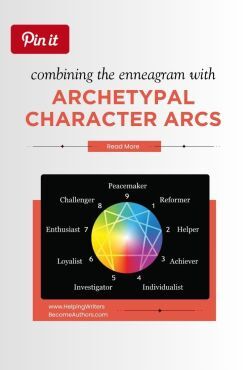 Note From KMW: Before we get started today, this is just a quick note to let you know that today is the final day you can save 25% off my entire store during my Memorial Day weekend sale. This includes all the e-books, workbooks, courses, and brainstorming guides. If you need some new writing tools, now’s a great time!
Note From KMW: Before we get started today, this is just a quick note to let you know that today is the final day you can save 25% off my entire store during my Memorial Day weekend sale. This includes all the e-books, workbooks, courses, and brainstorming guides. If you need some new writing tools, now’s a great time!
***
The Enneagram is often thought of as a personality system, but at its heart, it is an archetypal map of human motivation and transformation. Each of its nine types represents a universal pattern of behavior rooted in deep emotional truths (what we, as storytellers, might think of as thematic Truths). Like the Life Cycle of archetypes I explore in my book Writing Archetypal Character Arcs, the Enneagram reflects the evolving inner journeys we all undertake throughout our lives.
Although this archetypal similarity makes the Enneagram and the six Life-Cycle archetypes intuitive partners, it can also be difficult to sort the complexity of the two systems in a way that is actually useful for developing characters. Last week, we explored some of the innumerable possibilities for character-arc variation available within each Enneagram type. This week, I’m answering another reader question—from Elisheva–that points to this central conundrum of combining the Enneagram with the archetypes of the Life Cycle:
I love archetypes and I love the Enneagram, but when I try to use both tools when writing a story I get confused about how they interact. Both of them have their own Lies and conflict dynamics. And yet, they both are true. As a person, we go through the archetypical life stages, but we also have our personality to contend with. So, essentially, we are juggling the Lies and conflicts that come with each stage while also juggling the Lies and conflicts from our innate natures. How does this work when writing a story, so as not to confuse ourselves and others and get tangled in a conglomeration of themes, Lies, and conflicts—but to have it come through cohesively?
The shortest answer is that you don’t need to understand or combine both systems in order to create dynamic and dimensional characters. Often, the simplest approach is best, in which case focusing on either an archetypal approach or an Enneagram approach might be best. However, if you enjoy the complexity of examining how different systems combine to reveal even deeper insights into human behavior, then this is your stop!
In This Article:What Happens When You Combine Archetypal Arcs With Enneagram Insights?Enneagram Lies for the 6 Archetypes of the Life CycleType 1: The ReformerType 2: The HelperType 3: The AchieverType 4: The IndiviudalistType 5: The InvestigatorType 6: The LoyalistType 7: The AdventurerType 8: The ChallengerType 9: The PeacemakerBest Fit Enneagram Types for Each ArchetypeWhat Happens When You Combine Archetypal Arcs With Enneagram Insights?As I’ve explored in other posts (linked below), the Enneagram is a system of nine archetypal personality types, each representing a different core motivation and strategy for navigating the world. It maps surface behaviors, as well as the deep emotional patterns that drive our actions, fears, and desires. Unlike many personality systems, the Enneagram charts a path of growth, showing how individuals can evolve toward their healthiest, most integrated selves—or fall into patterns of stress and fixation.
>>Click here to read 5 Ways to Use the Enneagram to Write Better Characters
>>Click here to read 9 Positive Character Arcs in the Enneagram
>>Click here to read 9 Negative Character Arcs in the Enneagram
>>Click here to read Enneagram Types for Writers: Types 1-4
>>Click here to read Enneagram Types for Writers: Types 5-9
>>Click here to read Avoiding Repetition for Lies Each Type Might Believe
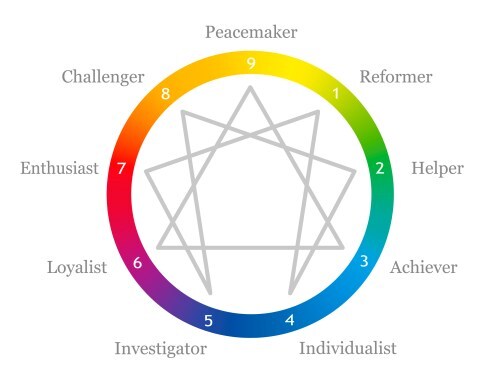

Writing Archetypal Character Arcs (affiliate link)
Similarly, the archetypal Life Cycle I explore in my book Writing Archetypal Character Arcs (and the Archetypal Character Guided Meditations) charts the universal phases of transformation we experience as we move through life. From the individuation of the Maiden, through the personal expansion of the Hero, the leadership of the Queen, the sacrifice of the King, the acceptance of the Crone, and the surrender of the Mage, the cycle demonstrates how archetypal energies evolve as we mature, confront challenges, and step into new roles within both our inner landscapes and our outer lives.
Combined, these two systems offer a richly layered view of human development. The Enneagram helps us understand the why behind our individual journeys (i.e., our motivations, blind spots, and inner work), while the archetypal Life Cycle provides a broader view of the when (i.e., the inevitable seasons of growth and change we all encounter). Together, they can create a powerful framework for writing deeper characters, as well as living more conscious, authentic lives.
Enneagram Lies for the 6 Archetypes of the Life CycleWhat follows is, as ever, a limited and subjective list of suggestions for how the themes of the Life Cycle and the Enneagram may mingle. My hope is that it will spark your own intuitive knowing about these deep archetypes, so you can find your own best interpretations for your characters and stories.
Type 1: The ReformerCore Lie: “I must be good to be worthy.”
Maiden’s Lie: “I must always be perfect to earn a place in the world.”
Book/Movie Example: Hermione Granger (Harry Potter) constantly seeks academic perfection to prove herself, but must individuate beyond the system of authority to learn which rules are worth breaking.

Harry Potter and the Philosopher’s Stone (2001), Warner Bros.
Hero: “I can only defeat evil if I never make mistakes.”
Theoretical Example: A police cadet learns that true bravery lies not in flawless actions, but in showing up and serving despite imperfections.
Queen: “Leading means upholding impossible moral standards.”
Book/Movie Example: Jean Valjean (Les Misérables) burdens himself with living a perfectly moral life after his redemption.

Les Miserables (2018-2019), BBC One.
King: “I must be flawless to maintain my authority.”
Theoretical Example: A legendary mob boss, feared and respected for his rigid moral code and flawless control, must face the devastating truth that his need to be untouchable is tearing his empire apart.
Crone: “I failed in life because I was never perfect enough.”
Book/Movie Example: Judge Danforth (The Crucible) struggles to evolve with the times, clinging to his rigid beliefs and refusing to acknowledge his mistakes.
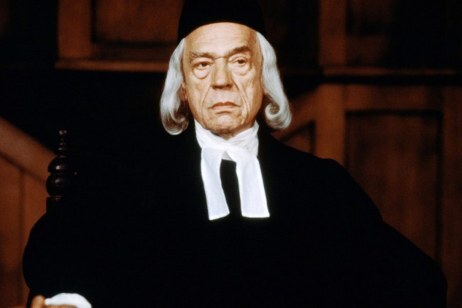
The Crucible (1996), 20th Century Fox.
Mage: “True wisdom is reserved for the flawless.”
Theoretical Example: A beloved professor, on the brink of retirement during a critical crisis facing his school, must confront his fear of leaving his students vulnerable and step back to let them take charge, trusting that their own mistakes will lead to the growth they need—while he comes to terms with the fact that his time as their guiding force has ended.
Core Lie: “I must earn love through service.”
Maiden: “If I am not useful, I will be abandoned.”
Theoretical Example: A young woman on the brink of adulthood believes she must constantly care for others and meet their emotional needs, even it means sacrificing her own dreams.
Hero: “I can only save others by sacrificing myself.”
Theoretical Example: A young paramedic, eager to prove his bravery and worth in service to his community, believes he must always be the first to respond to emergencies, even at the cost of his own well-being.
Queen: “I must care for everyone, even at the cost of my own needs.”
Movie Example: Mufasa (The Lion King) rules with compassion, but his inability to fully confront and neutralize the threat posed by his brother reveals his failure to assert the tough authority needed to protect the kingdom.

The Lion King (1994), Walt Disney Pictures.
King: “Real authority is earned by serving everyone else first.”
Theoretical Example: A veteran football coach, beloved for always putting his players first, must confront the painful truth that his need to be needed is holding the team back—and that the greatest act of service might be letting someone else lead.
Crone: “Without someone to care for, I have no purpose.”
Theoretical Example: A retired teacher, disheartened by the loss of her former vitality, is coaxed back into the community by a group of former students. She must reconcile with her own aging and accept that her contribution may now look different.
Mage: “Wisdom means knowing how to fix everyone’s pain.”
Theoretical Example: An aging master carpenter, watching his apprentices struggle with the pressures of their craft, must confront his deep need to fix their problems and allow them to endure the pain of their mistakes in order to grow into their own skill and wisdom.
Core Lie: “My worth depends on what I accomplish.”
Maiden: “I must earn the approval of my authority figures.”
Theoretical Example: A high school senior, eager to prove herself, constantly overextends her commitments and sacrifices her personal needs to earn the approval of her teachers and parents, believing her worth is defined by their recognition.
Hero: “I must win at all costs to prove my worth.”
Movie Example: Lightning McQueen (Cars) believes winning races is his only value.

Cars (2006), Walt Disney Pictures.
Queen: “My reign will only be respected if I am admired.”
Movie Example: Regina George (Mean Girls) seeks admiration above authentic leadership.
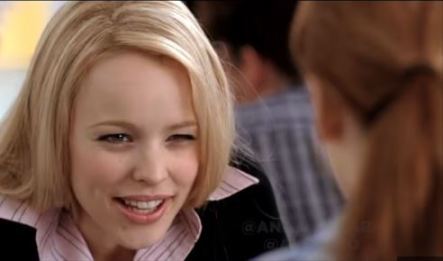
Mean Girls (2004), Paramount Pictures.
King: “My value lies in my success and productivity, so I must stay in control and maintain my position, even when it’s no longer serving the greater good.”
Play Example: Shakespeare’sRichard II clings to his throne, seeking personal validation and glory, but is ultimately forced to sacrifice his throne for the greater good of the kingdom when he realizes his inability to lead effectively has caused more harm than good.

The Hollow Crown (2012-2016), BBC Two
Crone: “Without accomplishments, I am nothing.”
Book/Movie Example: Miranda Priestly (The Devil Wears Prada) clings to her influence and refuses to advance her loyal employees.

The Devil Wears Prada (2006), 20th Century Fox
Mage: “I must prove my worth by making sure others succeed according to my standards, or I will be seen as ineffective or irrelevant.”
Theoretical Example: After decades of groundbreaking work, a renowned scientist hesitates to retire, fearing that stepping back will make his life’s achievements seem less significant if the next generation surpasses him.
Core Lie: “I must be unique to be significant.”
Maiden: “I must be unique and different to be truly valued, and if I don’t stand out, I’ll never be understood.”
Theoretical Example: A sheltered artist, struggling to believe her voice matters in a noisy world, is unsure how to break free from the expectations placed on her by family and society.
Hero: “I must prove my worth through my struggles and pain, or I will never truly be seen as special or important.”
Theoretical Example: A struggling musician determined to make it big must learn that personal growth comes not just through artistic expression, but by accepting himself and others.
Theoretical Example: A compassionate community organizer fears that if she imposes responsibility on others, she will be misunderstood and rejected for being too rigid or impersonal.
King: “My uniqueness sets me apart from everyone, including those I lead.”
Theoretical Example: An aging founder of a successful nonprofit, believing his uniqueness is what made the organization thrive, fears his departure will cause the loss of his individuality and the purpose he’s created.
Crone: “I was always too different to truly matter.”
Book/Movie Example: Miss Havisham (Great Expectations) isolates herself after heartbreak.

Great Expectations (2012), Lionsgate.
Mage: “My wisdom is irreplaceable, and no one else can truly understand my unique insights.”
Theoretical Example: A once-celebrated maestro watches his protégés follow their own unconventional paths, overcoming his fear that if he doesn’t guide every decision, his unique vision and legacy will be forgotten.
Core Lie: “I have to protect my energy and stay self-sufficient.”
Maiden: “I must have all the answers and fully understand everything before I can be valued or take action.”
Theoretical Example: A refugee teenager feels she must handle every challenge on her own, fearing that asking for help would put her at the mercy of unfeeling authorities.
Hero: “I can’t act until I know everything.”
Theoretical Example: A young environmental activist believes that to make a real difference, he must single-handedly lead every initiative and never show vulnerability, fearing that depending on others will expose his lack of knowledge or authority.
Queen: “Leading requires complete control over information.”
Theoretical Example: A respected scholar must come to terms with the limitations of her intellect and find a balance between reason and the emotional needs of others, ultimately discovering that leadership requires vulnerability.
King: “I must hold onto control at all costs because if I let go, everything will fall apart and no one will be able to manage without me.”
Theoretical Example: A long-serving mayor of a small town struggles to step down, convinced that without his detailed knowledge of the community’s history and past decisions, the town’s future will unravel.
Crone: “My worth ended when I stopped learning new things.”
Book/Movie Example: Ben Weatherstaff (The Secret Garden) is initially withdrawn and resigned to his age and solitude, but must learn to open up and connect with the younger generation.

The Secret Garden (1993), Warner Bros.
Mage: “True mastery requires total detachment.”
Theoretical Example: An admiral who has led his fleet through countless battles must now nurture younger officers as they begin to oversee their own missions.
Core Lie: “Security must come from the outside.”
Maiden: “I can’t trust myself; someone else must guide me.”
Movie Example: Rapunzel (Tangled) clings to Mother Gothel’s authority even as she grows suspicious.
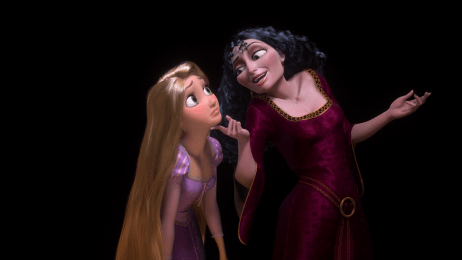
Tangled (2010), Walt Disney Pictures.
Hero: “I must rely on rules and authorities to survive.”
Theoretical Example: During the American Revolution, a young militia leader, determined to prove his worth in battle, hesitates to take command in the face of danger, fearing that if he fails, he will not only let down his comrades but prove he was never truly fit for leadership.
Queen: “The crown is safest when I control everyone’s loyalty.”
Theoretical Example: A new President, obsessed with maintaining unwavering loyalty from every member of her Cabinet, begins to micromanage their actions and decisions, believing any hint of dissent could unravel the entire country.
King: “I must eliminate all threats to maintain stability.”
Theoretical Example: A seasoned detective, revered for keeping his city safe through rigid oversight and paranoia, begins to unravel his own team with distrust and overreach, forcing him to realize that his need to control every threat is eroding the stability he built and that stepping aside is the only way to restore trust.
Crone: “I only mattered when others needed me for advice and support.”
Theoretical Example: An aging fairy godmother, long retired and forgotten, sinks into despair believing her worth ended when the kingdoms no longer needed her contribution—until a young, reckless princess unexpectedly seeks her out, forcing her to confront her fear of irrelevance and rediscover a deeper purpose in passing on her wisdom.
Mage: “True wisdom comes only from following tradition.”
Theoretical Example: An experienced blacksmith who has spent decades perfecting his craft allows his apprentice to explore modern advances.
Core Lie: “Pain must be avoided at all costs.”
Maiden: “I can’t commit to anything serious because if I do, I’ll be stuck and miss out on all the exciting possibilities life has to offer.”
Play/Book/Movie Example: To avoid sorrow and responsibility, Peter Pan (Peter Pan) refuses to grow up.
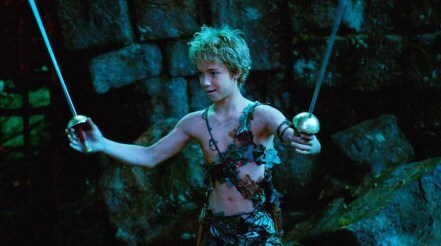
Peter Pan (2003), Universal Pictures.
Hero: “Winning means staying one step ahead of pain.”
Movie Example: Tony Stark (Iron Man) masks his trauma with wit and invention.

Iron Man 2 (2010), Marvel Studios.
Queen: “If I take on too much responsibility, I’ll lose my freedom and the joy of spontaneity that I crave.”
Show Example: Louis XIII (The Musketeers) refuses to face the mounting pressures of his reign, instead distracting himself with pleasures and escapism, believing that avoiding harsh realities will protect him from the pain of responsibility and prevent his kingdom from unraveling.
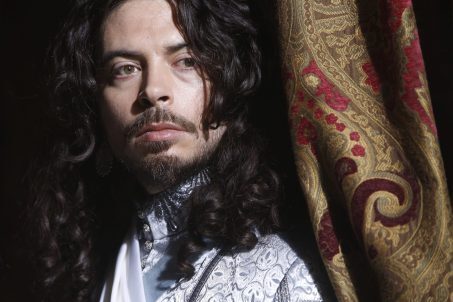
The Musketeers (2014-2016), BBC One
King: “If I step down, I’ll miss out on all the excitement and adventure, and my life will lose its purpose.”
Theoretical Example: The aging sheriff of a small frontier town refuses to retire, convinced that without the daily thrill of chasing outlaws and dispensing justice, his life will become empty and meaningless.
Crone: “If I stop chasing fun, I’ll face regret.”
Theoretical Example: In her twilight years, a once-vibrant grandmother convinces herself that if she keeps distracting herself with new hobbies and adventures, she can stave off the emptiness that comes with facing her mortality.
Mage: “I must keep my proteges entertained and excited with new ideas and challenges, or they’ll lose interest and never grow into their full potential.”
Book/Movie Example: Gandalf (The Lord of the Rings) sometimes feels the need to inject excitement and challenge to keep people engaged, especially during moments of stagnation.

The Lord of the Rings: The Fellowship of the Ring (2001), New Line Cinema.
Type 8: The ChallengerCore Lie: “Vulnerability equals weakness.”
Maiden: “If I don’t stay tough and in control, the world will crush me before I get the chance to grow up.”
Show Example: Haunted by the loss of her mother and consumed by shame over a secret mistake, a young Beth Dutton (Yellowstone) learns to weaponize her vulnerability—driving away Rip, the boy who loves her, believing that needing anyone will only lead to more pain and make her unfit to carry the Dutton legacy.

Yellowstone (2018-2024), Paramount Network.
Hero: “Victory demands total dominance.”
Book/Movie Example: Achilles (Troy) prioritizes glory over collaboration.

Troy (2004), Warner Bros.
Queen: “I must crush weakness to lead effectively.”
Movie Example: Princess Leia (Star Wars) believes that if she doesn’t keep absolute control over the Rebellion and shield everyone with her strength, everything she has built will fall apart.
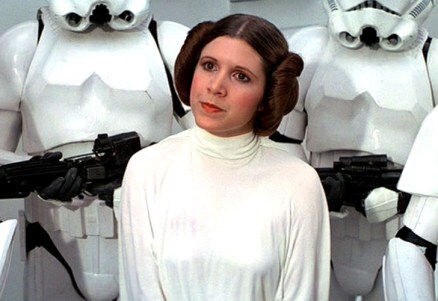
Star Wars: A New Hope (1977), 20th Century Fox.
King: “Power must be protected at all costs.”
Theoretical Example: An ancient dragon-king refuses to name a successor, believing that if he releases his hold on the throne, chaos will consume the realm and erase everything he’s built.
Crone: “If I show any weakness now, the world will forget me.”
Theoretical Example: An aging private investigator, weary from years of solving crimes, struggles with the belief that if she doesn’t stay ahead of everyone, she’ll be left behind and forgotten.
Mage: “If I don’t control everything around me, everything will fall apart.”
Theoretical Example: A dying inventor must accept that without his direct involvement, the future of art and science will fall into the hands of the next generation—whether they are ready or not.
Core Lie: “My presence creates conflict.”
Maiden: “If I assert myself, I’ll anger those in authority.”
Movie Example: Cinderella (Cinderella) silently endures mistreatment to preserve fragile peace with her step-family.
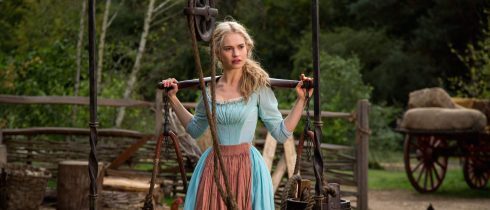
Cinderella (2015), Walt Disney Pictures.
Hero: “Keeping the peace is more important than fighting for what’s right.”
Book/Movie Example: Frodo Baggins (The Lord of the Rings) hesitates to act against Gollum despite danger.

The Lord of the Rings: The Return of the King (2003), New Line Cinema.
Queen: “A ruler must maintain harmony at any personal cost.”
Theoretical Example: A single mother must reconcile with her teenage son’s drug use and her struggle to impose discipline.
King: “Leadership means erasing my own desires.”
Theoretical Example: An aging carnival owner, long seen as the heart of a beloved traveling show, must confront the truth that true harmony sometimes means letting go.
Crone: “My life mattered only when I avoided conflict.”
Theoretical Example: A retired diplomat refuses to enter the fray again even though she is needed.
Mage: “Wisdom is found only in silence and noninterference.”
Book/Movie Example: Professor Dumbledore (Harry Potter) initially withholds vital truths, believing noninterference safest.

Harry Potter and the Order of the Phoenix (2007), Warner Bros.
Best Fit Enneagram Types for Each ArchetypeUnderstanding which Enneagram types align best with each character archetype can offer further insights for writers looking to craft psychologically resonant stories. Below, we’ll explore which Enneagram types can be the best fit for each of the six major archetypal arcs. As seen above, every Enneagram type will have the opportunity to embody each part of the archetypal Life Cycle. However, for the purposes of storytelling, certain Enneagram types more obviously align with the innate themes of certain life archetypes.

Click for a larger view.
1. Maiden ArcThe Maiden represents youth, innocence, and the early stages of growth. This archetype often involves a journey of self-discovery, in which the character confronts fears of inadequacy.
Suggested Best Fits:Type 2 (The Helper): Twos seek external validation and approval, often believing they must be useful to be loved or accepted. This aligns with the Maiden’s journey of proving her worth.
Type 4 (The Individualist): Fours often feel like outsiders and believe they’re too different or broken to belong. This aligns with the Maiden’s struggle to find her place.
Type 6 (The Loyalist): Sixes struggle with self-doubt and trust issues. This aligns with the Maiden’s early dependence on others.
2. Hero ArcThe Hero is the archetype of the individual who goes on a quest to prove himself, often facing trials that push him beyond his limits. This arc typically involves growth through challenges and the development of inner strength.
Suggested Best Fits:Type 3 (The Achiever): Threes are motivated by the desire to prove their worth through accomplishment. This aligns with the Hero’s need to confront the difference between authentic self-worth and success-driven identity.
Type 7 (The Enthusiast): Sevens seek excitement and avoid pain. This aligns with the Hero’s lessons in embracing hardships and responsibility, as well as the adventurousness found in many Hero stories.
Type 9 (The Peacemaker): Nines prefer to avoid conflict and maintain harmony. This aligns with the Hero’s lessons in standing up and taking action for what is right.
3. Queen ArcThe Queen archetype represents leadership, responsibility, and the balance of power with wisdom. The Queen must confront the tension between personal desires and the needs of others. She often faces internal conflict over whether to uphold idealistic values or to compromise for the greater good.
Suggested Best Fits:Type 1 (The Reformer): Ones seek perfection and uphold high moral standards. This aligns with the Queen’s responsibility to govern with justice.
Type 2 (The Helper): Twos may take on leadership roles out of a need to care for others. This aligns with the Queen’s struggle to balance the needs of the people she leads with the equal necessity for justice and fairness.
Type 3 (The Achiever): Threes are driven by a desire for success and admiration. This can align with the Queen’s desire to lead effectively while also ensuring she is loved and respected.
4. King ArcThe King is an archetype of mastery, authority, and moral leadership. Kings must balance power with compassion, making decisions that affect others, while also grappling with personal doubts about worth and legacy.
Suggested Best Fits:Type 1 (The Reformer): Ones value moral integrity while desiring to fix the world. This aligns with the King’s role as a ruler who holds the kingdom’s best interests at heart.
Type 6 (The Loyalist): Sixes seek stability and security, often taking on leadership roles when they believe they can protect others. This aligns with the King’s desire to shoulder the tremendous burden of total responsibility for his kingdom.
Type 8 (The Challenger): Eights possess a drive for control and strength; they must learn that real power comes from wisdom, not domination. This aligns with the King’s focus on authority and leadership.
5. Crone ArcThe Crone represents wisdom, reflection, and acceptance of life’s consequences. This archetype is concerned with legacy and the knowledge gained through life’s experiences.
Suggested Best FitsType 1 (The Reformer): Ones must learn to accept imperfection. This aligns with the Crone’s need to forgive herself and embrace her flaws.
Type 4 (The Individualist): Fours often feel like they are misunderstood or disconnected. This aligns with the Crone’s need to reflect on her life choices and embrace her true self.
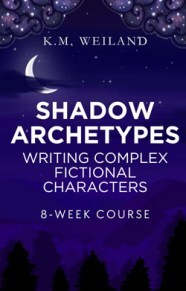 Type 5 (The Investigator): Fives search for knowledge and detachment. This aligns with the Crone’s focus on intellectual wisdom and the perspective gained over a lifetime. Fives can also align with the Hermit archetype, the negative aspect of which the Crone struggles with in her passive shadow form.
Type 5 (The Investigator): Fives search for knowledge and detachment. This aligns with the Crone’s focus on intellectual wisdom and the perspective gained over a lifetime. Fives can also align with the Hermit archetype, the negative aspect of which the Crone struggles with in her passive shadow form.
The Mage represents mastery, transformation, and the passing of knowledge. The Mage has the wisdom and skills to guide others, but may struggle with the isolation and surrender needed in the role of mentor.
Suggested Best Fits:Type 1 (The Reformer): Ones desire to fix and improve the world through wisdom and example. This aligns with the Mage’s role as a wise leader who desires to guide the young.
Type 3 (The Achiever): Mature Threes can provide guidance to others on how to achieve success while also needing to confront their need for external validation. This can align with the Mage’s role as a mentor who passes on knowledge.
Type 5 (The Investigator): Fives are natural learners and seekers of knowledge. This aligns with the Mage’s ability to impart wisdom to others.
Understanding the best-fit Enneagram types for each archetypal character arc can offer powerful insight into your characters’ internal journeys. When you align your characters’ Enneagram-driven fears and desires with the core themes of their archetypal arcs, you create a narrative with emotional resonance and psychological depth.
Whether your character is a Hero learning to face his limitations, a Queen learning to lead with integrity, or a Crone reckoning with her past, the Enneagram can add nuance and authenticity that helps bring the character arc to life. By thoughtfully pairing archetypes with Enneagram types, you can gain a dual lens through which to craft stories that both captivate and transform.
In Summary:Both the Enneagram and the archetypal Life Cycle systems are powerful tools for understanding human motivation and transformation. When combined, they can offer a deeper layer of insight into character development. The key challenge is balancing the complex dynamics of both systems without creating confusion in the story. While it’s not necessary to merge both systems to create dynamic characters, those who enjoy complexity can use them together to enrich their writing. Each Enneagram type brings its core Lie and conflict dynamics into the phases of the Life Cycle, influencing how characters evolve.
Key Takeaways:The Enneagram provides a framework for understanding a character’s motivations, fears, and desires, while the Life Cycle tracks universal phases of transformation.Combining both systems can deepen character exploration. However, it’s important to avoid overwhelming readers with too many conflicting themes and conflicts.Focusing on one system at a time (either Enneagram or archetypal Life Cycle) is a simpler approach, but integrating both can lead to more complex and nuanced character arcs.Using the core Lies and conflicts of each Enneagram type within the phases of the Life Cycle can help to create multidimensional characters that evolve through their internal and external struggles.Want More?If you’re ready to dive deeper into your characters and their journeys, my Archetypal Character Guided Meditations can help unlock fresh insights and inspire new creative possibilities. These guided meditations are perfect for dreamzoning, brainstorming, and exploring your characters’ core motivations from the inside out.
Whether your character’s story is best suited to the archetypes of Maiden, Hero, Queen, King, Crone, or Mage, these meditations will guide you to understand the heart of your characters and bring them to life in new and exciting ways. It’s like having a personal guide to help you dig into the soul of your story! Start exploring today: Archetypal Character Guided Meditations.
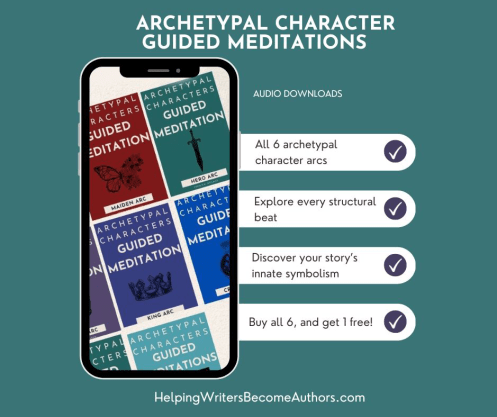
Go on the journey with your characters! Check out the Archetypal Character Guided Meditations.
Wordplayers, tell me your opinions! How do you merge archetypal characters with the Enneagram types in your writing? Which Enneagram type fits best with the archetypes you use, and how do their core motivations shape the journey? Tell me in the comments!Click the “Play” button to Listen to Audio Version (or subscribe to the Helping Writers Become Authors podcast in Apple Podcast, Amazon Music, or Spotify).
___
Love Helping Writers Become Authors? You can now become a patron. (Huge thanks to those of you who are already part of my Patreon family!)The post Crafting Archetypal Arcs With Enneagram Insights appeared first on Helping Writers Become Authors.
May 19, 2025
Using the Enneagram for Character Development: Avoiding Repetition for Lies Each Type Might Believe
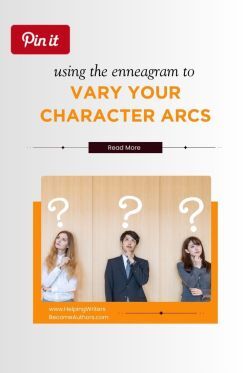 Using the Enneagram for character development can be a game-changer for crafting layered, believable characters. This ancient personality typing system can offer deep insight into your characters’ core fears and motivations, which makes it a natural fit for building compelling internal arcs. Because the Enneagram inherently emphasizes personal misconceptions (aka, the Lie the Character Believes), thematic Truths, and both Positive and Negative Change Arcs, it becomes an extremely intuitive tool for creating complex and realistic characters. But there is a rub.
Using the Enneagram for character development can be a game-changer for crafting layered, believable characters. This ancient personality typing system can offer deep insight into your characters’ core fears and motivations, which makes it a natural fit for building compelling internal arcs. Because the Enneagram inherently emphasizes personal misconceptions (aka, the Lie the Character Believes), thematic Truths, and both Positive and Negative Change Arcs, it becomes an extremely intuitive tool for creating complex and realistic characters. But there is a rub.
And the rub is that because the Enneagram features only nine personality types, it would also seem to offer only nine possible Lies, Truths, and character arcs. Zoe Dawson brought this up in requesting this post:
I use the Enneagram heavily in crafting my characters, so my question would be: What is your take on using the Enneagram nine personality types and constructing their Lies so that it’s not repetitious for each story? Examples would be great.
Although necessarily limited, the Enneagram still presents an incredibly comprehensive and complete framework for understanding human behavior. As such, there is a degree of truth to the idea that humans can only undergo a certain number of fundamental changes. This harks back to one of my favorite quotes, from Willa Cather:
There are only two or three human stories, and they go on repeating themselves as fiercely as if they never happened.
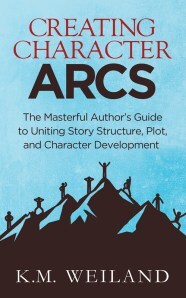
Creating Character Arcs (Amazon affiliate link)
Still, as Zoe points out, a prolific writer relying on the same framework for every character might find herself running into some repetition—especially when it comes to identifying the Lie each type believes. In previous posts, I’ve noted the fundamental Positive Change and Negative Change Arcs inherent within each core Enneagram type:
>>Click here to read 9 Positive Character Arcs in the Enneagram
>>Click here to read 9 Negative Character Arcs in the Enneagram
Today, I want to look at how to use the Enneagram to deepen your character work while keeping each journey distinct and emotionally resonant.
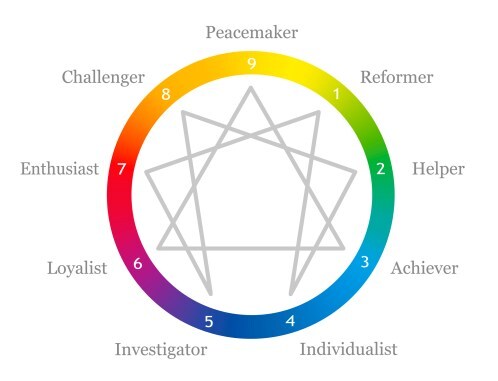
How can you avoid repetitive arcs when using personality tools like the Enneagram? If each type has a core fear and desire, doesn’t that mean every story featuring a Type One or a Type Nine will end up exploring the same emotional terrain?
Not at all.
In fact, using the Enneagram for character development can open up even deeper and more varied avenues for crafting emotional arcs. Although characters with the same type may struggle with the same core themes, the specific Lies they believe about themselves and the world can take many forms.
If you already know your own Enneagram type, you can think about this from the perspective of your own life. For example, as a core Three, I can easily look through my life and identify how my own core wounding, coping mechanisms, survival tactics, ego identities, and even interests and obsessions are predominantly themed around a Three’s central concerns with identity, authenticity, and personal truth. Indeed, even the fact that my explorations of story theory have focused on character arcs and the internal conflict between “Lies” and “Truths” is arguably a direct emergent from my Three perspective.
When most people think of Threes, they think of the stereotype: hyper-competent workaholic obsessed with success and image. If that’s all you knew about Threes, you might struggle to write characters with personalities nuanced enough to reveal the spiraling fractal of depth hidden behind this simplistic archetype. A deeper understanding of how the Enneagram works (not to mention how people and stories work) allows us to access the functional simplicity of this nine-part system as a foundation for the realistic variation it reveals.
From there, the Enneagram can become a wonderful tool for noticing and exploring the specific flavor of insight and blindness each type brings to any situation. In moving beyond the simplistic stereotypes to acknowledge the deeper themes at play for each type, the sheer vastness of thematic possibilities also becomes clear. For example, if you wanted to explore a Three’s obsession with the subjectivity/objectivity of Truth, you would discover what are likely unlimited character arcs that can eventuate. This is, of course, equally true of all the types.
Using Instinctual Variants to Create Unique Character Arcs
Writing Archetypal Character Arcs (affiliate link)
With all of that said, the suggestions I’m going to share in the rest of today’s post barely scratch the surface of the possible Lies any one type may be challenged to overcome. Next week, I’ll be digging into this a little deeper in answering another reader’s question with an exploration of how Enneagram types function in the different archetypes of the Life Cycle. For today, I decided the most useful way to begin examining the variety available within Enneagram character arcs would be to note how each type’s core Lie may vary depending on which instinctual variant is dominant.
What Are the Three Instinctual Variants?One of the most illuminating nuances in the Enneagram system is the concept of instinctual variants—what are sometimes called subtypes. These are the primal survival drives that shape how each of the nine types shows up in the world. Instinctual variants don’t change your core type, but they do flavor how that type expresses itself in everyday life.
For more on instinctual variants, I highly recommend Beatrice Chestnut’s book The Complete Enneagram.

There are three instinctual variants:
1. Self-Preservation (sp):This instinct centers around safety, comfort, and physical well-being. If this is your dominant instinct, you’re probably highly attuned to issues like health, finances, routine, and creating a secure personal environment. You might notice yourself scanning your life for what’s missing or unstable before anything goes wrong.
2. Social (so):This instinct is all about group dynamics, belonging, and impact. Social-dominant people pay close attention to how they fit into the collective. They’re often oriented toward their place in the tribe, their reputation, and their contribution toward something bigger than themselves. This doesn’t always mean extroversion; it’s more about their awareness of the system.
3. Sexual (sx):Also called the one-to-one instinct, this drive is focused on intensity, intimacy, and magnetism. It’s about fusion: being fully seen, fully known, and fully alive in the presence of another. People with a dominant sexual instinct crave depth in relationships and experiences. They often have a kind of “charge” to them—an edge, an allure, a sense of passion that leads the way.
CountertypesEven though each of us uses all three instincts, we tend to favor one, repress another, and let the third play a supporting role. (For example, because I am self-preservation dominant and social repressed, my instinct stack would be shown like this: sp-sx-so.)
Here’s the twist: the dominant instinct can sometimes override the “typical” behavior of your core type. This creates what are called countertypes—one specific orientation for each type that looks different from the core type, but which still lives out the same core fear and desire underneath. (For example, as you’ll see later on, the fact that I am a Three with a self-preservation dominant instinct makes me the countertype. In short: even though I always feel like a Three, I don’t always look like a Three.)
Understanding characters’ instinctual stacks can bring incredible clarity to what type of character arc and thematic journey they are most likely to undertake—and how that might evolve from story to story or even character to character, regardless of type.
Different Lies Each Enneagram Type Character Might BelieveLet’s look at how each Enneagram type can be used to explore a variety of Lies across different stories, genres, and voices. (Note that these examples should not be taken too explicitly—i.e., as the only way to express each subtype’s Lies. They are meant to spur your creativity, particularly in regard to the subjectivity of Enneagram types for the characters referenced. They are also not necessarily representative of a character arc that is completed in the referenced examples. As usual, I have relied on the typings from the site Funky MBTI.)
Type 1: The ReformerCore Lie: “I must be good to be worthy.”
Core Fear: Being corrupt, defective, or wrong.
Core Desire: To be good, virtuous, and balanced.
Social Lie: “If I don’t set the moral standard, no one will.”
Example: Hermione Granger (Harry Potter): Hermione’s obsession with studying, rules, and doing things “the right way” stems from her fear of failure and need to be seen as competent and morally upright.

Harry Potter and the Philosopher’s Stone (2001), Warner Bros.
Sexual Lie (COUNTERTYPE): “It’s up to me to set the world right—no matter the cost”
Example: Catherine Freneau (Father Goose): Catherine’s intensity stems from a deep sense of personal mission. She pushes herself and others toward transformation, often coming across as driven, zealous, and unrelenting in her pursuit of what she sees as necessary change—even when it strains her relationships.
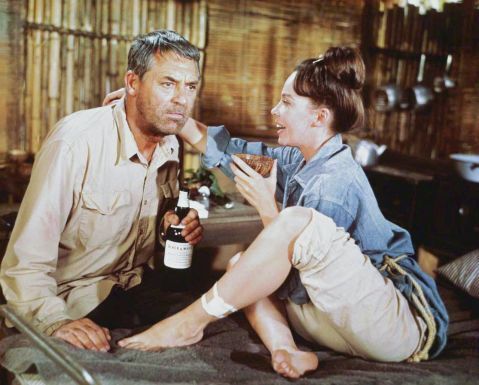
Father Goose (1964), Universal Pictures.
Self-Preservation Lie: “If I’m not prepared and perfect, I’ll be blamed.”
Example: Atticus Finch (To Kill a Mockingbird): With quiet resolve and unwavering principles, Atticus carries the burden of justice on his shoulders—believing that if he doesn’t stand strong, everything could unravel.

To Kill a Mockingbird (1962), Universal Pictures.
Type 2: The HelperCore Lie: “I must earn love through service.”
Core Fear: Being unworthy of love.
Core Desire: To be loved and needed.
Social Lie: “If I serve the greater good, I’ll be loved by all.”
Example: Padmé Amidala (Star Wars): Padmé sacrifices her personal desires to serve her people. She’s gracious and composed, always putting duty above self, but her deepest longing is to be accepted and loved for who she really is.

Star Wars: Attack of the Clones (2002), 20th Century Fox.
Sexual Lie: “If I am not needed by someone, I am not valuable.”
Example: Frances Stevens (To Catch a Thief): Frances is bold, alluring, and direct in her affections—flirting and pursuing while also deeply craving connection and validation beneath the surface.
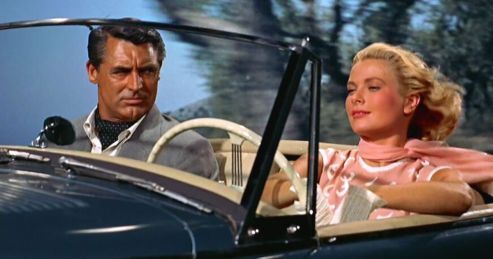
To Catch a Thief (1955), Paramount Pictures.
Self-Preservation Lie (COUNTERTYPE): “If I act helpless or innocent, others will take care of me.”
Example: Robert Crawley (Downton Abbey): Robert often plays the helpless patriarch, relying on others to manage both personal and family matters while maintaining his sense of entitlement to care and attention.

Downton Abbey (2010-15), ITV.
Type 3: The AchieverCore Lie: “My worth depends on what I accomplish.”
Core Fear: Being worthless or failing.
Core Desire: To be valued and admired for success.
Social Lie: “I must be admired and respected for my success.”
Example: P.T. Barnum (The Greatest Showman): Barnum thrives on his ability to garner admiration and respect through his business success and the spectacle he creates, positioning himself as a charismatic leader and influencer in the public eye.

The Greatest Showman (2017), 20th Century Fox.
Sexual Lie: “My value comes from how attractive and charismatic I am to others.”
Example: Scarlett O’Hara (Gone with the Wind): Scarlett builds her self-worth through her attractiveness and the way she charms others, seeing her relationships and romantic success as a reflection of her value.

Gone With the Wind (1939), MGM.
Self-Preservation Lie (COUNTERTYPE): “I need to work hard and prove myself to secure my place.”
Example: Nancy Wheeler (Stranger Things): Nancy, driven by a need for accomplishment and approval, constantly works hard to prove her worth, even if it means compromising her personal needs for the sake of her career and goals.

Stranger Things (2016-), Netflix.
Type 4: The IndividualistCore Lie: “I must be unique to be significant.”
Core Fear: Being ordinary or not special.
Core Desire: To find themselves and their significance.
Social Lie: “My suffering makes me worthy of love.”
Example: Rose DeWitt Bukater (Titanic): Rose feels trapped and unseen, expressing her suffering as a way of asserting her individuality and longing for a more meaningful life.
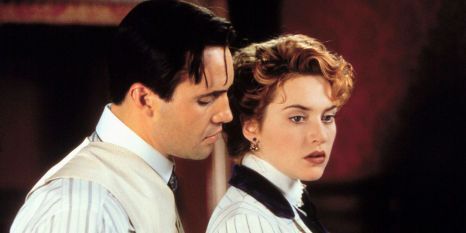
Titanic (1997), Paramount Pictures.
Sexual Lie: “If I fight hard enough for what I want, I’ll finally prove I’m not broken.”
Example: Kylo Ren (Star Wars: The Force Awakens): Kylo is consumed by his desire to prove himself, constantly fighting to overcome his perceived weakness and claim a powerful, meaningful identity.
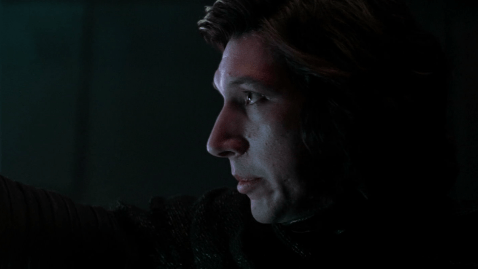
Star Wars: The Force Awakens (2015), Lucasfilm Ltd.
Self-Preservation Lie (COUNTERTYPE): “If I keep pushing myself through pain, I’ll finally become who I’m meant to be.”
Example: Jess Mariano (Gilmore Girls): Jess hides his emotional sensitivity beneath a hardened exterior, relying on independence and quiet intensity to forge his own path in life.

Gilmore Girls (2000-2007), The CW.
Type 5: The InvestigatorCore Lie: “I have to protect my energy and stay self-sufficient.”
Core Fear: Being overwhelmed or incapable.
Core Desire: To be competent and capable.
Social Lie: “If I master complex knowledge, I’ll earn my place in the world.”
Example: J. Robert Oppenheimer (Oppenheimer): Oppenheimer commands respect through genius, but remains emotionally withdrawn—even while standing at the center of a historical moment.

Oppenheimer (2023), Universal Pictures.
Sexual Lie (COUNTERTYPE): “If I fully merge with someone, I won’t feel so alone.”
Example: Scottie Ferguson (Vertigo): Scottie becomes obsessively attached to an imagined ideal of love, losing himself in his desire for a connection that will make him feel whole.

Vertigo (1958), Paramount Pictures.
Self-Preservation Lie: “If I hoard my resources and keep to myself, I’ll finally feel safe.”
Example: Ebenezer Scrooge (A Christmas Carol): Scrooge isolates himself and clings tightly to his wealth and solitude, believing this is the only way to feel secure in the world.

A Christmas Carol (2009), Walt Disney Pictures.
Type 6: The LoyalistCore Lie: “Security must come from the outside.”
Core Fear: Being without support or guidance.
Core Desire: To have security and guidance.
Social Lie: “If I follow the rules and uphold the system, I won’t have to be afraid.”
Example: Willow Rosenberg (Buffy the Vampire Slayer): Willow clings to structure—school, rules, the Scooby Gang—to soothe her insecurity, only stepping into independence when surrounded by trust and purpose.

Buffy the Vampire Slayer (1997-2001, The WB)
Sexual Lie (COUNTERTYPE): “If I’m strong and intimidating enough, nothing can hurt me.”
Example: Guy of Gisborne (Robin Hood): Guy compensates for his insecurity with aggression and dominance, trying to prove his worth through strength, loyalty, and desire.
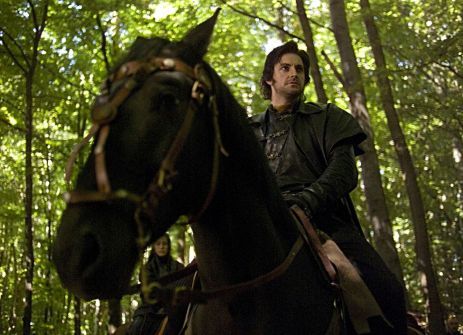
Robin Hood (2006-2009), BBC Studios.
Self-Preservation Lie: “If I stay close to what’s familiar and keep others happy, I’ll be safe.”
Example: Bilbo Baggins (The Hobbit): Bilbo prefers the safe predictability of his hobbit hole and resists adventure, until trust in others helps him find his courage.
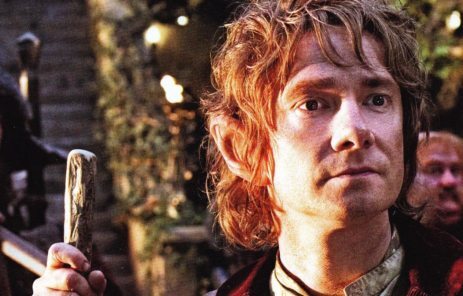
The Hobbit: An Unexpected Journey (2012), Warner Bros.
Type 7: The EnthusiastCore Lie: “Pain must be avoided at all costs.”
Core Fear: Being deprived or trapped in pain or deprivation.
Core Desire: To experience satisfaction and fulfillment.
Social Lie (COUNTERTYPE): “If I serve a meaningful cause and stay upbeat, I’ll be valued and protected.”
Example: Elizabeth Bennet (Pride and Prejudice): Lizzy combines charm and cleverness with a sense of social justice and moral clarity, while using wit and idealism to sidestep vulnerability.
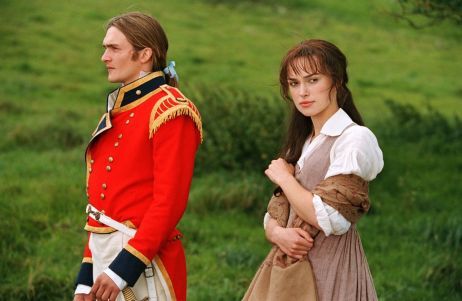
Pride & Prejudice (2005), Focus Features.
Sexual Lie: “If I follow my passions and chase the next dazzling experience, I’ll find what I’m missing.”
Example: Ariel (The Little Mermaid): Ariel dives headfirst into new worlds and romantic dreams, enchanted by what could be and driven by a restless hunger for something more.
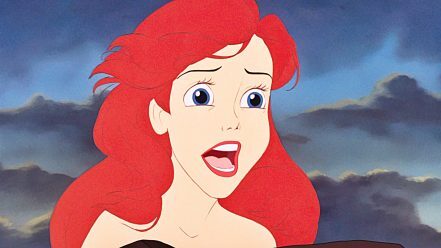
The Little Mermaid (1989), Walt Disney
Self-Preservation Lie: “As long as I surround myself with the right people and pleasures, I’ll be fine.”
Example: Han Solo (Star Wars): Han seeks freedom, resources, and loyal allies to keep life pleasurable and self-serving, even while avoiding the emotional weight of deeper connection.
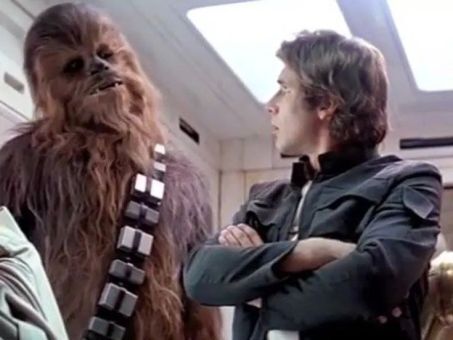
Star Wars: The Empire Strikes Back (1980), 20th Century Fox.
Type 8: The ChallengerCore Lie: “Vulnerability equals weakness.”
Core Fear: Being controlled or vulnerable.
Core Desire: To protect self and remain in control.
Social Lie (COUNERTYPE): “If I fight for others and protect what’s right, I can justify my strength and find belonging.”
Example: George Bailey (It’s a Wonderful Life): George is a passionate, justice-driven leader who sacrifices his own dreams to protect his community but still struggles with the weight of responsibility and frustration.
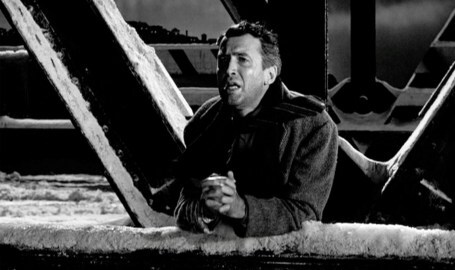
It’s a Wonderful Life (1947), Liberty Films.
Sexual Lie: “If I can overpower and possess what I want, I’ll never be betrayed or abandoned.”
Example: Erik Killmonger (Black Panther): Erik’s aggression stems from a deep fear that trusting anyone will lead to his downfall.

Black Panther (2018), Marvel Studios.
Self-Preservation Lie: “As long as I can take care of myself and get what I need, I don’t have to rely on anyone.”
Example: Henry VIII (The Tudors): Possessive and forceful, Henry demands absolute loyalty and control in love and power—unwilling to surrender anything once he’s claimed it.
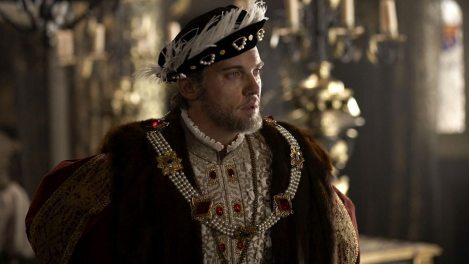
The Tudors (2007-2010), BBC Two
Type 9: The PeacemakerCore Lie: “My presence creates conflict.”
Core Fear: Being overwhelmed by conflict and tension.
Core Desire: To create inner and outer peace.
Social Lie (COUNTERTYPE): “If I’m useful to the group, I’ll be safe and accepted.”
Example: Frodo Baggins (The Lord of the Rings): Frodo puts the fellowship’s mission above his own well-being, often losing himself in the needs of the collective.

The Lord of the Rings: The Fellowship of the Ring (2001), New Line Cinema.
Sexual Lie: “I only matter when I merge completely with someone else.”
Example: Bella Swan (Twilight): Bella dissolves her sense of identity into her relationship with Edward, struggling to separate her desires from his.

Twilight (2008), Summit Entertainment.
Self-Preservation Lie: “As long as I’m comfortable, nothing else really matters.”
Example: Queen Elizabeth II (The Crown): Elizabeth quietly clings to routine and the comforts of duty, avoiding emotional upheaval by keeping everything in its place.
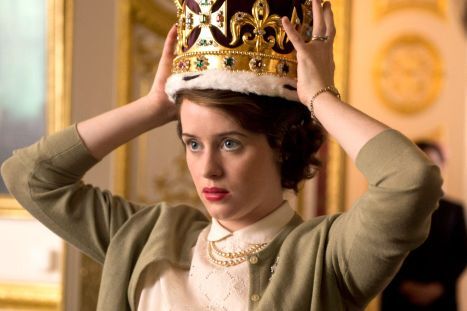
The Crown (2016-2023), Netflix.
***
By integrating the Enneagram’s instinctual variants into your character development process, you gain access to a dynamic range of emotional and thematic possibilities, even within the same type. Far from boxing your characters into rigid molds, the Enneagram offers a flexible and deeply human lens through which to explore their varied struggles, motivations, and transformations. Whether you’re writing a single story or an entire series, the richness of these internal variations ensures that each character arc can remain fresh, specific, and emotionally resonant.
In SummaryEven when writing multiple characters of the same Enneagram type, there is a world of variety available. By identifying new Lies and the situations in which those Lies can arise, writers can deepen both the realism and emotional texture of their characters.
Key TakeawaysCharacters of the same Enneagram type share core fears and desires, but not identical arcs.The specific Lie a Character Believes can change depending on their environment, relationships, and inner development.Great storytelling often comes from exploring different expressions of the same psychological truth.The instictual variants that create the Enneagram subtypes open a window into the variety available for exploring many different themes and arcs.Want More?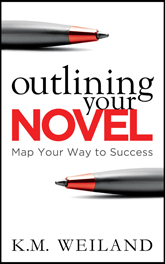
Outlining Your Novel (Amazon affiliate link)
Want to elevate your character development? Outlining Your Novel is the perfect guide to help you structure your plot and deepen your characters. It offers a plethora of tools for character development, including personality systems like the Enneagram. You can gain valuable insights into your characters’ motivations and growth, helping you create multi-dimensional figures that resonate with your readers. You can pair these frameworks with the outlining process in the companion workbook to craft compelling characters who feel real and dynamic. Start outlining your way to stronger, unforgettable characters today! It’s available in paperback, e-book, and audiobook
Wordplayers, tell me your opinions! Have you ever used the Enneagram for character development in your writing? What insights has it given you into your characters’ motivations and growth? Tell me in the comments!Click the “Play” button to Listen to Audio Version (or subscribe to the Helping Writers Become Authors podcast in Apple Podcast, Amazon Music, or Spotify).
___
Love Helping Writers Become Authors? You can now become a patron. (Huge thanks to those of you who are already part of my Patreon family!)The post Using the Enneagram for Character Development: Avoiding Repetition for Lies Each Type Might Believe appeared first on Helping Writers Become Authors.


